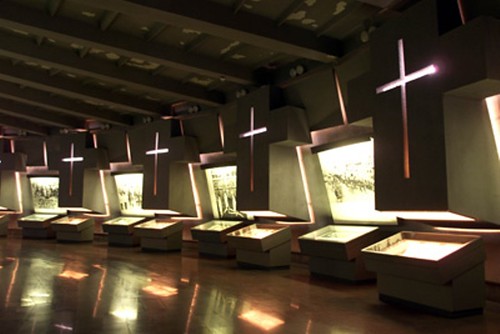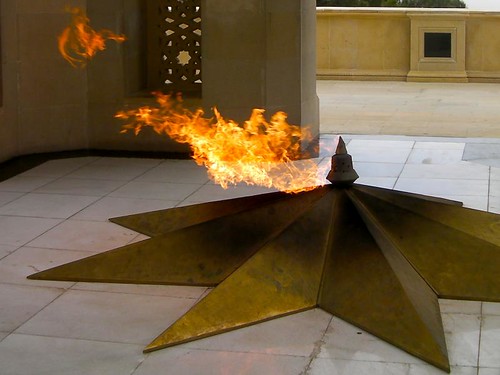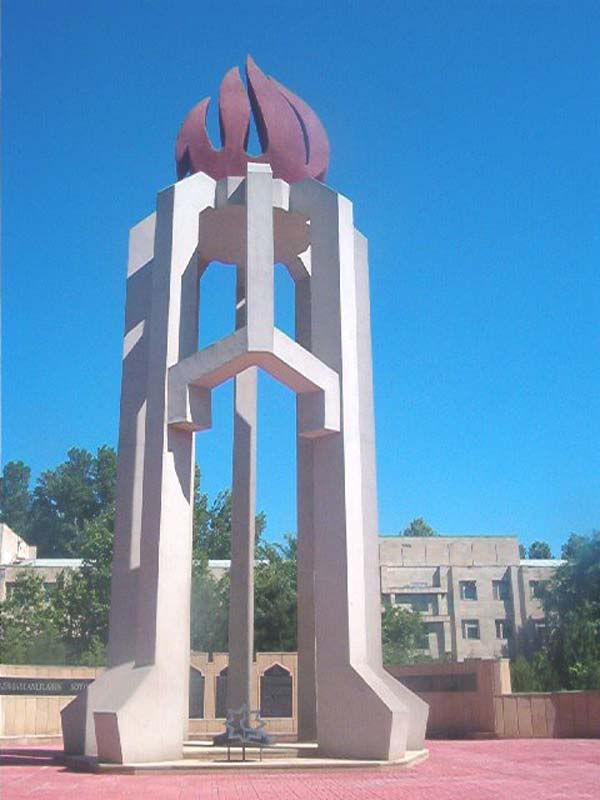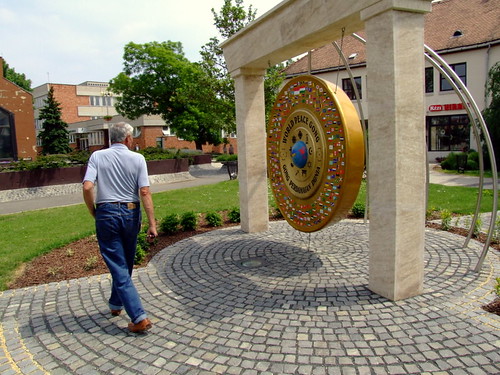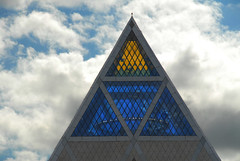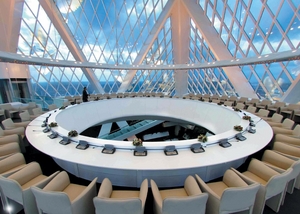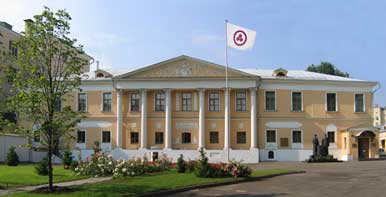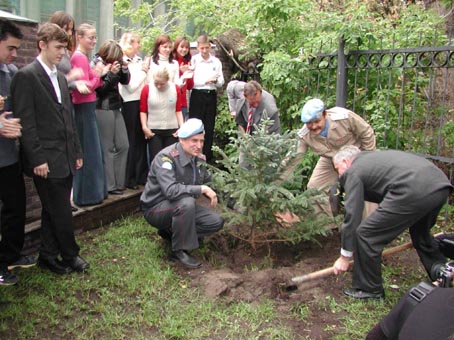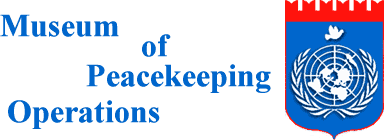Please email your comments & questions to geovisual at comcast.net. Thank you.
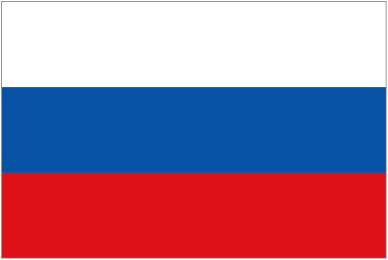
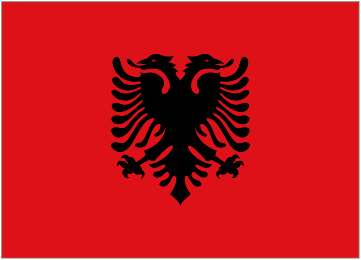


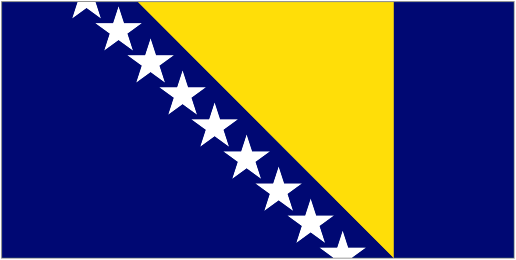
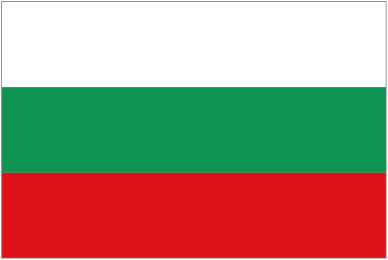

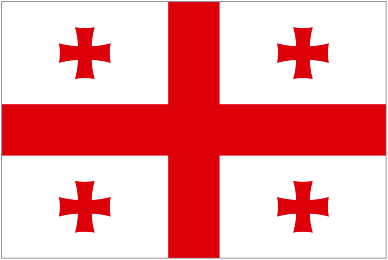
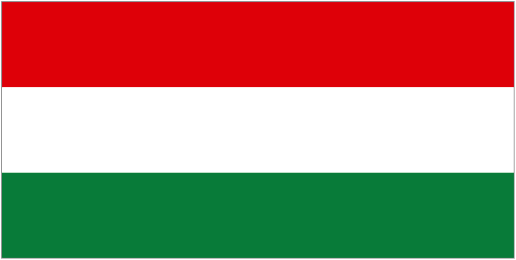
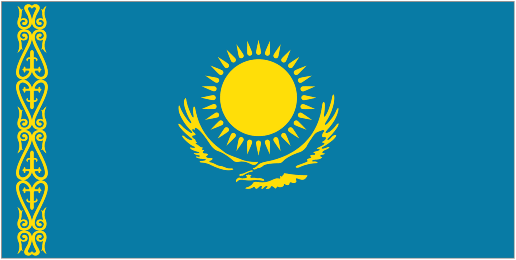
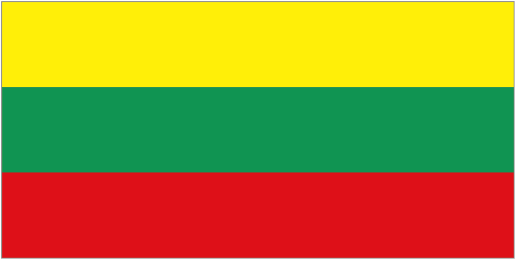


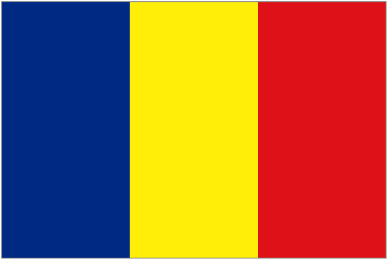
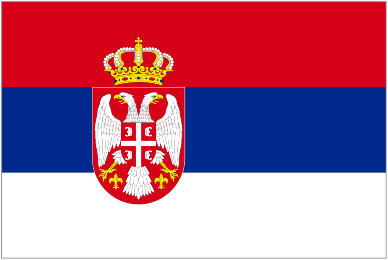
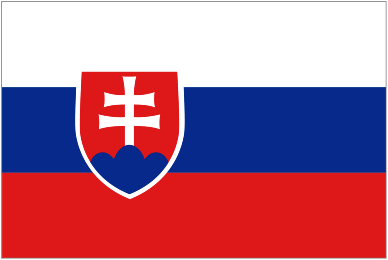
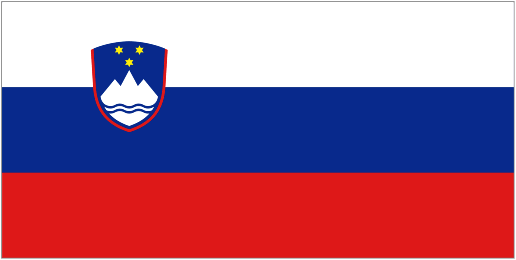
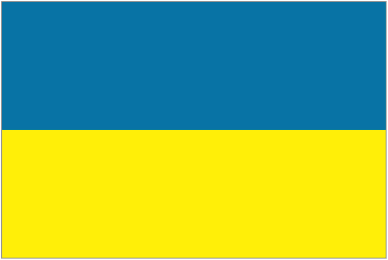
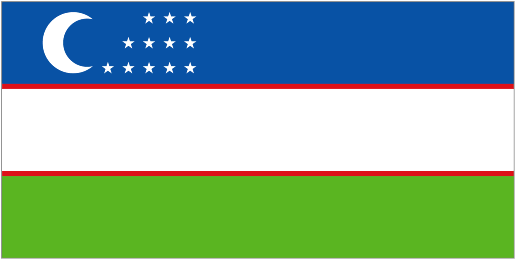

| 
| 120 Peace Monuments in Russia
& Other Countries of Eastern Europe
(including Albania, Armenia, Azerbaijan,
Bosnia & Herzegovina, Bulgaria, Czech Republic,
Estonia, Georgia, Hungary,
Kazakhstan, Latvia,
Lithuania, Montenegro, Poland, Romania,
Serbia,
Slovakia, Slovenia, Ukraine & Uzbekistan) |
2 Peace Monuments in Albania
Right click image to enlarge

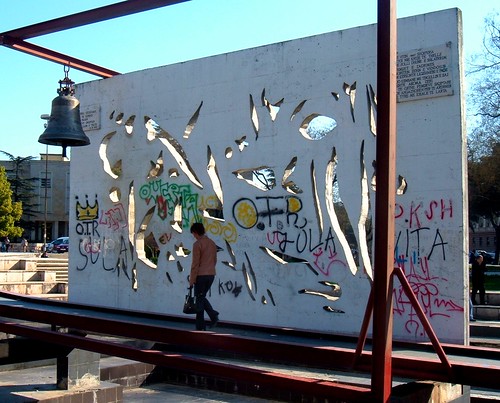

|  1999 - Bell of Peace, International Centre of Culture (The Pyramid), Boulevard Deshmoret e Kombit, Tirana (Albania). "Made as a memorial to peace by the children of Shkodra. Its metal comes from thousands of bullet cartridges, fired off during the lawless 1990's." "Originally the mausoleum for Stalinist dictator Enver Hoxha [1908-1985], the Pyramid has seen the eviction of Hoxha's corporeal remains and the burgeoning of Albania's interest in the culture and arts." 1999 - Bell of Peace, International Centre of Culture (The Pyramid), Boulevard Deshmoret e Kombit, Tirana (Albania). "Made as a memorial to peace by the children of Shkodra. Its metal comes from thousands of bullet cartridges, fired off during the lawless 1990's." "Originally the mausoleum for Stalinist dictator Enver Hoxha [1908-1985], the Pyramid has seen the eviction of Hoxha's corporeal remains and the burgeoning of Albania's interest in the culture and arts."
|
4 Peace Monuments in Armenia
Right click image to enlarge


|  Date? - Peace Monument, Haghtanak Park (Victory Park), top of Cascade, Yerevan (Armenia). "The park is named Victory Park in commemoration of Soviet Armenia's participation in the second World War. The park is a large forested area with an artificial lake, an amusement park, cafes, the Mayr Hayastan statue and museum, and sweeping views of central Yerevan ." Date? - Peace Monument, Haghtanak Park (Victory Park), top of Cascade, Yerevan (Armenia). "The park is named Victory Park in commemoration of Soviet Armenia's participation in the second World War. The park is a large forested area with an artificial lake, an amusement park, cafes, the Mayr Hayastan statue and museum, and sweeping views of central Yerevan ."
|


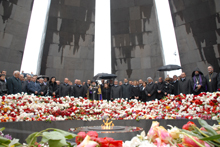
 |  1968 - Tsitsernakapert Erevan / Tsitsernakaberd Armenian Genocide Memorial, Yerevan (Armenia). "44 meter stele symbolizing the national rebirth of Armenians. 12 slabs are positioned in a circle, representing the 12 lost provinces in present day Turkey. In the center of the circle, at a depth of 1.5 meters, there is an eternal flame." "Sits on the site of a Iron Age fortress, all above-ground trace of which seems to have disappeared." Ceremony marking 95th anniversry of the genocide took place here on April 23, 2010 (right image)." 1968 - Tsitsernakapert Erevan / Tsitsernakaberd Armenian Genocide Memorial, Yerevan (Armenia). "44 meter stele symbolizing the national rebirth of Armenians. 12 slabs are positioned in a circle, representing the 12 lost provinces in present day Turkey. In the center of the circle, at a depth of 1.5 meters, there is an eternal flame." "Sits on the site of a Iron Age fortress, all above-ground trace of which seems to have disappeared." Ceremony marking 95th anniversry of the genocide took place here on April 23, 2010 (right image)."
|

|  Date? - Tsitsernagapert Genocide Memorial, Yerevan (Armenia). Date? - Tsitsernagapert Genocide Memorial, Yerevan (Armenia).
|

| M
U
S
E
U
M |   "Before 2011" - Armenian Genocide Museum of America (AGMA), 615-14th Street, NW, Washington, DC (USA). "Will be the premier institution in the USA dedicated to educating American and international audiences about the Armenian Genocide and its continuing consequences. Visitors will come to understand the Armenian Genocide as the prototype for modern crimes against humanity, including the Holocaust, Cambodia, Rwanda, and Darfur." "Before 2011" - Armenian Genocide Museum of America (AGMA), 615-14th Street, NW, Washington, DC (USA). "Will be the premier institution in the USA dedicated to educating American and international audiences about the Armenian Genocide and its continuing consequences. Visitors will come to understand the Armenian Genocide as the prototype for modern crimes against humanity, including the Holocaust, Cambodia, Rwanda, and Darfur." 
|
9 Peace Monuments in Azerbaijan
Right click image to enlarge

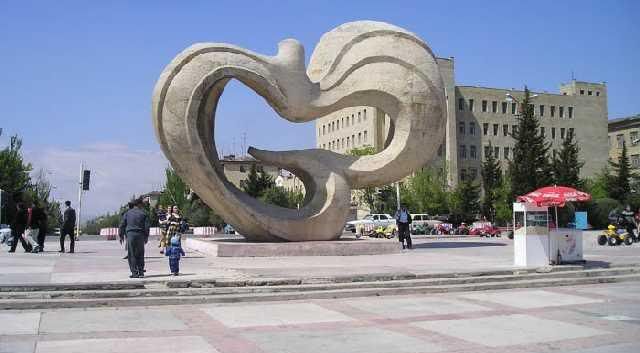


|  Date? - Friendship Monument, Sumgait near Baku (Azerbaijan). Date? - Friendship Monument, Sumgait near Baku (Azerbaijan).
|
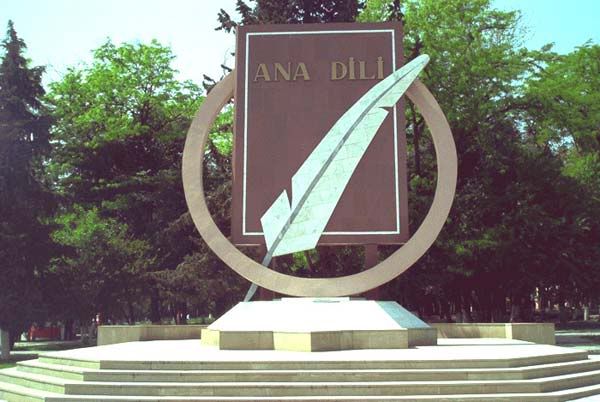
|  Date? - "Mother Language" Monument, Mingachevir (Azerbaijan). "Built of black marble, the monument is a feather framed on the "Azeri Language" book, which in Azeri titled "Ana Dili" ("Mother Language"). The monument's designer, Elman Leleyev, tried to emphasize importance of knowing ones native language in today's world. The "Mother Language" monument is unique because of its having been dedicated to Azerbaijani language. The picture of the "Mother Language" is the cover design for the Azeri textbooks used in high schools." Date? - "Mother Language" Monument, Mingachevir (Azerbaijan). "Built of black marble, the monument is a feather framed on the "Azeri Language" book, which in Azeri titled "Ana Dili" ("Mother Language"). The monument's designer, Elman Leleyev, tried to emphasize importance of knowing ones native language in today's world. The "Mother Language" monument is unique because of its having been dedicated to Azerbaijani language. The picture of the "Mother Language" is the cover design for the Azeri textbooks used in high schools."
|

|  After 1992 - Genocide Memorial, Lenkoran (Azerbaijan).
Dedicated to the victims of the Khojali Massacre. After 1992 - Genocide Memorial, Lenkoran (Azerbaijan).
Dedicated to the victims of the Khojali Massacre.
| 
|  Date? - Genocide Monument, Quba City (Azerbaijan). Click here for information about the Azerbaijan genocide. Date? - Genocide Monument, Quba City (Azerbaijan). Click here for information about the Azerbaijan genocide.
|

| S
T
A
T
U
E |  Date? - Khojaly Massacre Memorial, Baku (Azerbaijan). Date? - Khojaly Massacre Memorial, Baku (Azerbaijan).
|

|  February 24, 2008 - Khojaly Massacre Memorial, The Hague (Netherlands). "An initiative of Azerbaijani Diaspora & another one built in Ankara (Turkey) commemorating the Khojaly Massacre [on February 25-26, 1992, in Nagorno Karabag, Azerbaijan]. Another memorial will be constructed in Budapest (Hungary)." February 24, 2008 - Khojaly Massacre Memorial, The Hague (Netherlands). "An initiative of Azerbaijani Diaspora & another one built in Ankara (Turkey) commemorating the Khojaly Massacre [on February 25-26, 1992, in Nagorno Karabag, Azerbaijan]. Another memorial will be constructed in Budapest (Hungary)." 
|

| S
T
A
T
U
E |  Date? - Monument to women's liberation, Nizami Station, Central Baku (Azerbaijan). "Displays a woman removing her headscarf. Is she still Muslim? In the Azeri sense, she is... The bronze lady at Nizami station is freeing herself of Islamist oppression, not of Islam itself. The truly spiritual know that Allah is not to be found in a piece of cloth. Symbols such as the headscarf only count for so much and can also be misleading. On one Azeri train an old lady demanded to know why I wear a full beard, an uncommon sight in this country. I asked an English speaking passenger in our compartment why she seems so bothered by it. 'She’s worried that you are an Al Qaeda terrorist,' he replied." Date? - Monument to women's liberation, Nizami Station, Central Baku (Azerbaijan). "Displays a woman removing her headscarf. Is she still Muslim? In the Azeri sense, she is... The bronze lady at Nizami station is freeing herself of Islamist oppression, not of Islam itself. The truly spiritual know that Allah is not to be found in a piece of cloth. Symbols such as the headscarf only count for so much and can also be misleading. On one Azeri train an old lady demanded to know why I wear a full beard, an uncommon sight in this country. I asked an English speaking passenger in our compartment why she seems so bothered by it. 'She’s worried that you are an Al Qaeda terrorist,' he replied."
|
1 Peace Monument in Belarus
Right click image to enlarge.


| B
E
L
L | 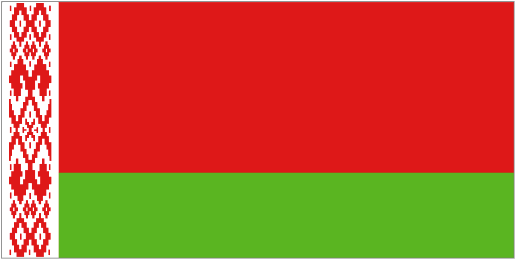 Fall 2000 - Nagasaki Peace Bell, Red Church, Nezalezhnastsi/Independence Square, Minsk (Belarus). Western style bell as at Urakami Cathedral. Named "Angel." Gift to the Red Church & Belarussian people by diocese of the Roman Catholic Church of Nagasaki
(Japan). Fall 2000 - Nagasaki Peace Bell, Red Church, Nezalezhnastsi/Independence Square, Minsk (Belarus). Western style bell as at Urakami Cathedral. Named "Angel." Gift to the Red Church & Belarussian people by diocese of the Roman Catholic Church of Nagasaki
(Japan). 
|
3 Peace Monuments in Bosnia & Herzegovina
Right click image to enlarge.
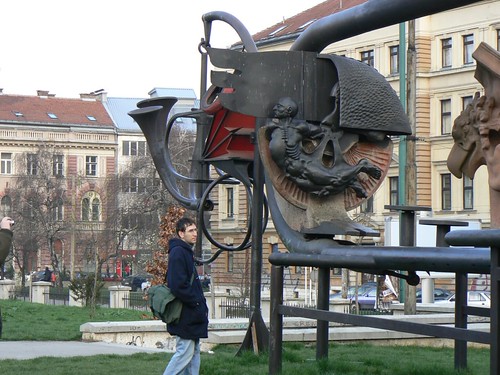
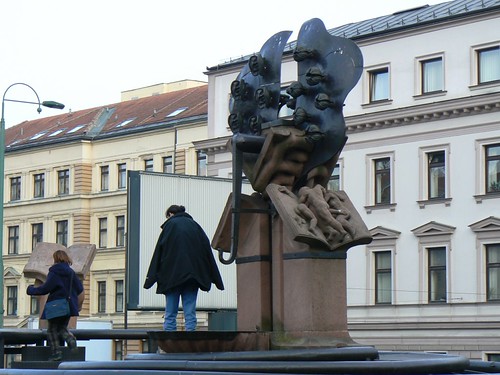

|  Date? - Peace Monument, Sarajevo (Bosnia & Herzegovina). "A strange monument dedicated to the struggle for peace after the [1992-1996] war in Bosnia." Two different monuments? Date? - Peace Monument, Sarajevo (Bosnia & Herzegovina). "A strange monument dedicated to the struggle for peace after the [1992-1996] war in Bosnia." Two different monuments?
| 
|  Date? -
Peace Monument, Serbian Orthodox Cathedral, Sarajevo (Bosnia & Herzegovina). Constructed recently. Date? -
Peace Monument, Serbian Orthodox Cathedral, Sarajevo (Bosnia & Herzegovina). Constructed recently.
|
6 Peace Monuments in Bulgaria
Right click image to enlarge.


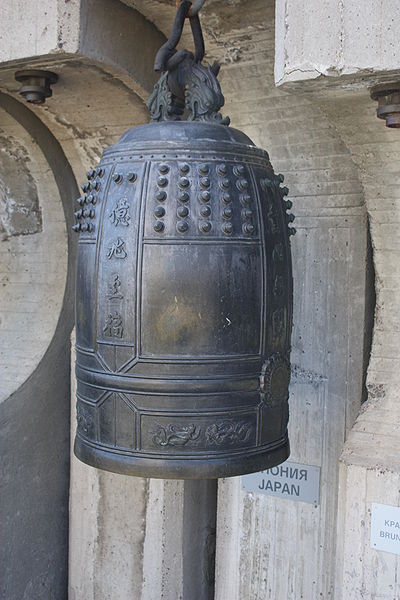


| T
O
W
E
R | B
E
L
L
S |  August 15, 1979 - Kambanite / Bells ("Banner of Peace" Monument),
Sofia (Bulgaria). Contains bells from all over the world. Dedicated to the well being and happiness of children everywhere.
"The international 'Banner of Peace' movement dates back to 1979, when the First Children’s Assembly 'Banner of Peace' was held in Sofia in dedication to the International Year of the Child (IYC). By 1989, four assemblies and four meetings of children from all over the world have been held in Sofia. Altogether, 3,900 kids from 138 countries and 14,000 children from Bulgaria have taken part. The movement’s motto is 'Unity, Creativity, Beauty,' while its basic principle is 'Anyone can be a creator in the Peace Assembly.'" Information courtesy of Katina Klyavkova 05Jan2014; she wrote, "The idea of its founder Liudmila Jivkova [1942-1981] is one of the greatest peace-exchanging ideas I have heard, and I am proud of it." See Nicholas Roerich [1874-1947].
August 15, 1979 - Kambanite / Bells ("Banner of Peace" Monument),
Sofia (Bulgaria). Contains bells from all over the world. Dedicated to the well being and happiness of children everywhere.
"The international 'Banner of Peace' movement dates back to 1979, when the First Children’s Assembly 'Banner of Peace' was held in Sofia in dedication to the International Year of the Child (IYC). By 1989, four assemblies and four meetings of children from all over the world have been held in Sofia. Altogether, 3,900 kids from 138 countries and 14,000 children from Bulgaria have taken part. The movement’s motto is 'Unity, Creativity, Beauty,' while its basic principle is 'Anyone can be a creator in the Peace Assembly.'" Information courtesy of Katina Klyavkova 05Jan2014; she wrote, "The idea of its founder Liudmila Jivkova [1942-1981] is one of the greatest peace-exchanging ideas I have heard, and I am proud of it." See Nicholas Roerich [1874-1947]. 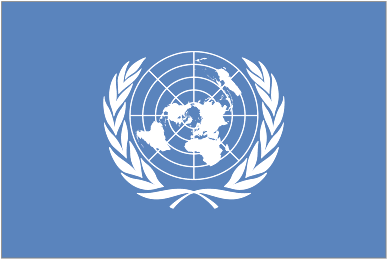
|

 | S
C
U
L
P
T |  December 3, 1980 - "A Call," Peace Symbols Zone, Nagasaki Peace Park, Nagasaki (Japan). From Bulgaria. "Symbolizes the struggle of youth in search of peace and harmony by depicting a woman with her arms stretched up." December 3, 1980 - "A Call," Peace Symbols Zone, Nagasaki Peace Park, Nagasaki (Japan). From Bulgaria. "Symbolizes the struggle of youth in search of peace and harmony by depicting a woman with her arms stretched up." 
|

 | C
O
L
U
M
N
|  1998 - "Monument of Gratitude," Plovdiv (Bulgaria). "Commemorates the averted deportation of the Plovdiv Jews in March 1943." Dedicatory [upper] inscription in Hebrew: "To the memory of the man who assisted in the saving of the Jews of Plovdiv on 10th March 1943." The [lower] English inscription reads: "To all who helped to save us on 10th March 1943, from the grateful Jewish community of Plovdiv." /// "Plovdiv is the second city in Bulgaria in population & significance after the capital Sofia... In 1943 1,500 Jews were saved from deportation in concentration camps by the archbishop of Plovdiv, Cyril [1901-1971], who later became the Bulgarian Patriarch... Most of the Jews left the city after the foundation of Israel in 1948." Information courtesy of Katina Klyavkova 05Jan2014. 1998 - "Monument of Gratitude," Plovdiv (Bulgaria). "Commemorates the averted deportation of the Plovdiv Jews in March 1943." Dedicatory [upper] inscription in Hebrew: "To the memory of the man who assisted in the saving of the Jews of Plovdiv on 10th March 1943." The [lower] English inscription reads: "To all who helped to save us on 10th March 1943, from the grateful Jewish community of Plovdiv." /// "Plovdiv is the second city in Bulgaria in population & significance after the capital Sofia... In 1943 1,500 Jews were saved from deportation in concentration camps by the archbishop of Plovdiv, Cyril [1901-1971], who later became the Bulgarian Patriarch... Most of the Jews left the city after the foundation of Israel in 1948." Information courtesy of Katina Klyavkova 05Jan2014.
|

| W
I
N
G
S | W
A
L
L |   August 25, 2000 - Wings of Peace & Freedom Park, Northeast corner of Galena Avenue & 2nd Street, Dixon, Illinois (USA). On Ronald Reagan Trail. Includes replica of Berlin Wall (largest words: PEACE & FREIHEIT). "Gifted to the city of Dixon by Nick Tanev, a native of Bulgaria, who experienced first-hand the oppression of his homeland with the presence of Germany during WW-II and the invasion of Russia after the war. Mr. Tanev lost his business & assets to the state.
After 14 years of applying for immigration, Tanev came to Chicago with his family in 1963 & began a number of successful enterprises. In 1978, the Bulgarian immigrant decided to have a sculpture created for both Bulgaria & the United States that would acknowledge his roots & celebrate his US. Citizenship. The project would symbolize the hope that the East & West could come together and live in peace & freedom. Mr. Tanev chose Dixon as the site of the US sculpture in appreciation for President Ronald Reagan's work to bring freedom to Eastern Europe." Dixon is the childhood home of President Ronald Reagan [1911-2004]. August 25, 2000 - Wings of Peace & Freedom Park, Northeast corner of Galena Avenue & 2nd Street, Dixon, Illinois (USA). On Ronald Reagan Trail. Includes replica of Berlin Wall (largest words: PEACE & FREIHEIT). "Gifted to the city of Dixon by Nick Tanev, a native of Bulgaria, who experienced first-hand the oppression of his homeland with the presence of Germany during WW-II and the invasion of Russia after the war. Mr. Tanev lost his business & assets to the state.
After 14 years of applying for immigration, Tanev came to Chicago with his family in 1963 & began a number of successful enterprises. In 1978, the Bulgarian immigrant decided to have a sculpture created for both Bulgaria & the United States that would acknowledge his roots & celebrate his US. Citizenship. The project would symbolize the hope that the East & West could come together and live in peace & freedom. Mr. Tanev chose Dixon as the site of the US sculpture in appreciation for President Ronald Reagan's work to bring freedom to Eastern Europe." Dixon is the childhood home of President Ronald Reagan [1911-2004].  
|


|  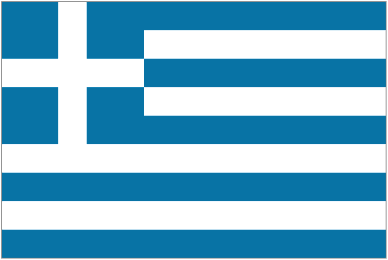 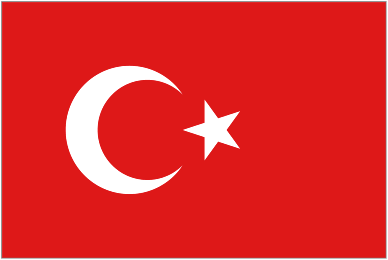 2005 - Peace Monument, at BGGRTR tripoint (Bulgaria, Greece & Turkey). "On an island on Maritsa River, known as Kavak ada or Evros Alpha." 2005 - Peace Monument, at BGGRTR tripoint (Bulgaria, Greece & Turkey). "On an island on Maritsa River, known as Kavak ada or Evros Alpha."
|
1 Peace Monument in Croatia
Right click image to enlarge.
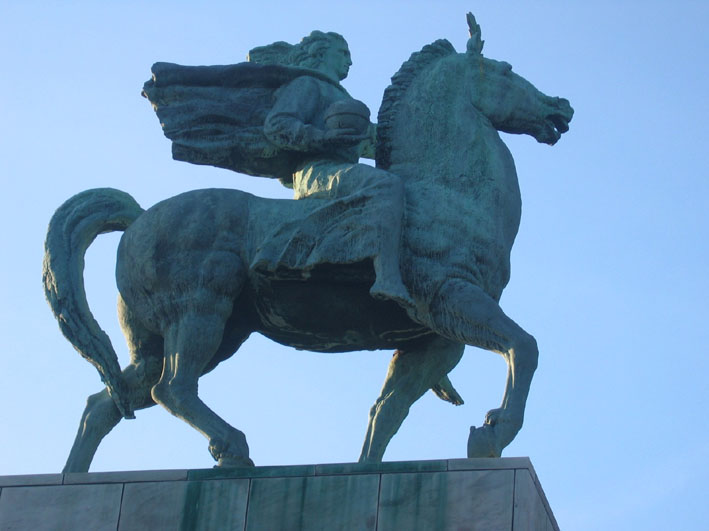


|   1954 - Horsewoman (Monument of Peace), United Nations, New York, NY (USA). "One of the symbols of the United Nations that everybody knows is... a sculpture created by Antun Augustincic [1900-1979]. It was given as a gift to the UN and it is situated in front of the main building in New York. The basement of the monument is made of the marble from the Croatian island of Brac. The equestrian statue was cast in the city of Zagreb, capital of Croatia." // "Correction" received 18Apr11 from Valentino More in Germany: "...was a present of the Complete-Yugoslav-Nation, the Golden-Middle between the two blocks of East-West/Cold-War conflict.
Since Anti-Hitler-Coalition, Yugoslavia honourable United Nation-Founding-Member.
You can't change The Enduring Truth." 1954 - Horsewoman (Monument of Peace), United Nations, New York, NY (USA). "One of the symbols of the United Nations that everybody knows is... a sculpture created by Antun Augustincic [1900-1979]. It was given as a gift to the UN and it is situated in front of the main building in New York. The basement of the monument is made of the marble from the Croatian island of Brac. The equestrian statue was cast in the city of Zagreb, capital of Croatia." // "Correction" received 18Apr11 from Valentino More in Germany: "...was a present of the Complete-Yugoslav-Nation, the Golden-Middle between the two blocks of East-West/Cold-War conflict.
Since Anti-Hitler-Coalition, Yugoslavia honourable United Nation-Founding-Member.
You can't change The Enduring Truth." 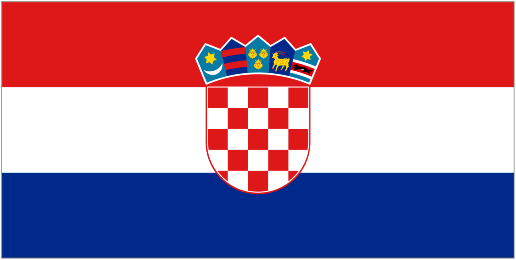

|
6 Peace Monuments in Czech Republic
Right click image to enlarge.




| C
A
I
R
N | M
U
S
E
U
M |  1912 - Pamatnik Mohyla Míru / Cairn of Peace & Muzeum Brnenska / Brno Regional Museum, Prace, Moravia (Czech Republic). "85-foot monument commemorates Battle of Austerlitz (aka Battle of the Three Emperors), December 2, 1805, when Napoleon defeated the Austrian & Russian coalition, leading to the Peace of Pressburg (Bratislava). Within the memorial there is a chapel and small museum (moderized in 2005), while on the outside, four female statues symbolize France, Austria, Russia & Moravia." Member of International Network of Museums for Peace (INMP). 1912 - Pamatnik Mohyla Míru / Cairn of Peace & Muzeum Brnenska / Brno Regional Museum, Prace, Moravia (Czech Republic). "85-foot monument commemorates Battle of Austerlitz (aka Battle of the Three Emperors), December 2, 1805, when Napoleon defeated the Austrian & Russian coalition, leading to the Peace of Pressburg (Bratislava). Within the memorial there is a chapel and small museum (moderized in 2005), while on the outside, four female statues symbolize France, Austria, Russia & Moravia." Member of International Network of Museums for Peace (INMP).
|
 |   1944 - Lidice Memorial, Phillips, Wisconsin (USA). "A tribute to the village of Lidice (Czechoslovakia). In 1942, the village was destroyed & nearly all of its citizens were killed by the Ordnungspolizei of Nazi Germany in response to Operation Anthropoid, the assassination of Reinhard Heydrich [1904-1942]. Added to the National Register of Historic Places in 2006." 1944 - Lidice Memorial, Phillips, Wisconsin (USA). "A tribute to the village of Lidice (Czechoslovakia). In 1942, the village was destroyed & nearly all of its citizens were killed by the Ordnungspolizei of Nazi Germany in response to Operation Anthropoid, the assassination of Reinhard Heydrich [1904-1942]. Added to the National Register of Historic Places in 2006." 
|


|  Date? - Statue of Peace & Freedom, Námestí Míru / Peace Square, Slavonice, Moravia (Czech Republic). Woman with dove of peace. When & why named for peace (the square & the statue)? Date? - Statue of Peace & Freedom, Námestí Míru / Peace Square, Slavonice, Moravia (Czech Republic). Woman with dove of peace. When & why named for peace (the square & the statue)?
|

|  1979 - "Girl with a dove," St. Ludmila's cathedral, Prague (Czech Republic). "On its simple white pedestal, the graceful 'Dívka s holubicí' (Girl with a Dove) by sculptor Jiri Krystufek (born 1932) is one of the most striking statues in Prague. The simplicity of its concept belies the complexity of technique, which has a dove literally at the point of release from the girl's outstretched hand.
Krystufek is an internationally renowned sculptor specializing in such youthful forms, whose work is held in private collections in the Czech Republic, the USA, France, Holland, Belgium & Germany.
The alternative name for this 1979 statue is 'Mir' - embodying the tutelary spirit of Peace Square (Namestí Míru). But 'Dívka s holubicí' is also a memorial. Archive footage shows that this remarkable piece was erected on the very spot where a number of Soviet soldiers were buried in May 1945 in the aftermath of the liberation of Prague." 1979 - "Girl with a dove," St. Ludmila's cathedral, Prague (Czech Republic). "On its simple white pedestal, the graceful 'Dívka s holubicí' (Girl with a Dove) by sculptor Jiri Krystufek (born 1932) is one of the most striking statues in Prague. The simplicity of its concept belies the complexity of technique, which has a dove literally at the point of release from the girl's outstretched hand.
Krystufek is an internationally renowned sculptor specializing in such youthful forms, whose work is held in private collections in the Czech Republic, the USA, France, Holland, Belgium & Germany.
The alternative name for this 1979 statue is 'Mir' - embodying the tutelary spirit of Peace Square (Namestí Míru). But 'Dívka s holubicí' is also a memorial. Archive footage shows that this remarkable piece was erected on the very spot where a number of Soviet soldiers were buried in May 1945 in the aftermath of the liberation of Prague."
|

| W
A
L
L |  November? 1980 - John Lennon Peace Wall, Diplomatic Quarter, Prague (Czech Republic). "Though Lennon never visited the Bohemian capitol, he was a pacifist hero for the Czech subculture during the totalitarian era. In the decade following the collapse of Communism, the Lennon Wall came to represent not only a memorial to Lennon and his ideas, but also a monument to free speech and the non-violent rebellion of Czech youth against the repressions of neo-Stalinism. Under the ever watchful eyes of the Communist secret police, an anonymous group of Prague youth set up a mock grave for the ex-Beatle." November? 1980 - John Lennon Peace Wall, Diplomatic Quarter, Prague (Czech Republic). "Though Lennon never visited the Bohemian capitol, he was a pacifist hero for the Czech subculture during the totalitarian era. In the decade following the collapse of Communism, the Lennon Wall came to represent not only a memorial to Lennon and his ideas, but also a monument to free speech and the non-violent rebellion of Czech youth against the repressions of neo-Stalinism. Under the ever watchful eyes of the Communist secret police, an anonymous group of Prague youth set up a mock grave for the ex-Beatle."
|
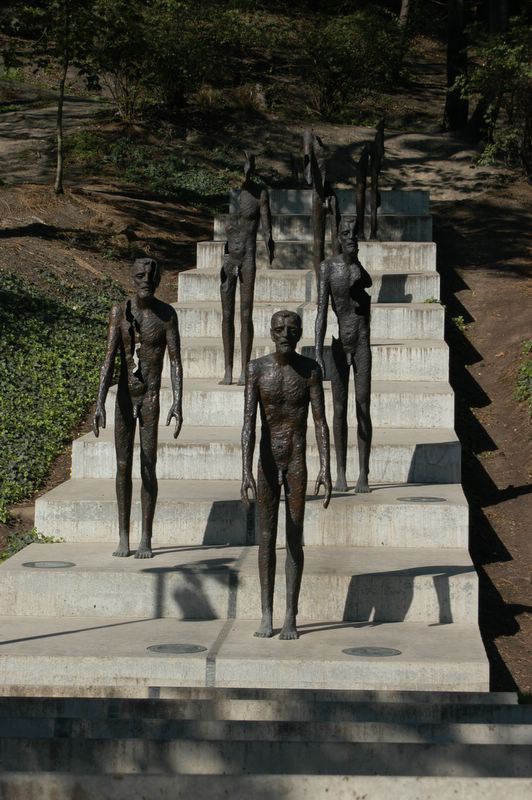
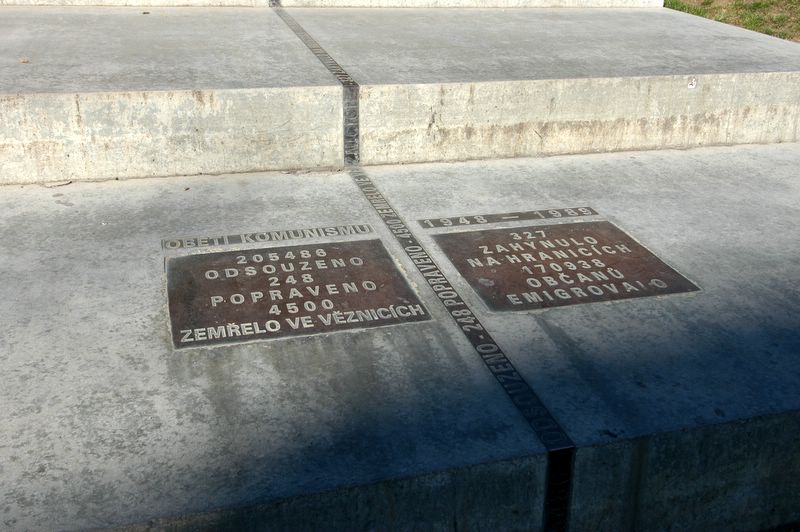

| M
E
M
O
R
I
A
L |  May 22, 2002 - Memorial to the Victims of Communism, Lesser Town under Petrin Hill, Prague (Czech Republic). "The first memorial to victims of the Communist regime was unveiled in Prague. It consists of a line of quite scary statues representing different phases of a human figure’s destruction.
At first one part of the body is missing, then another & another until the figure seems to totally disappear into the void. The work of renowned Czech sculptor Olbram Zoubek & architects Jan Kerel & Zdenek Hoelzel. Unfortunately one of the statues has been destroyed during a bomb attack in 2003.
It is moving not just for those who were contemporary with the communist regime and know some things about it, but for everybody who passes by. It simply gives you the spooks looking at it..." Plaque inscribed "Victims of Communism - 205486 convicteded, 248 executed, 4500 died in prison, 327, died at the borders, 170938 emigrated." May 22, 2002 - Memorial to the Victims of Communism, Lesser Town under Petrin Hill, Prague (Czech Republic). "The first memorial to victims of the Communist regime was unveiled in Prague. It consists of a line of quite scary statues representing different phases of a human figure’s destruction.
At first one part of the body is missing, then another & another until the figure seems to totally disappear into the void. The work of renowned Czech sculptor Olbram Zoubek & architects Jan Kerel & Zdenek Hoelzel. Unfortunately one of the statues has been destroyed during a bomb attack in 2003.
It is moving not just for those who were contemporary with the communist regime and know some things about it, but for everybody who passes by. It simply gives you the spooks looking at it..." Plaque inscribed "Victims of Communism - 205486 convicteded, 248 executed, 4500 died in prison, 327, died at the borders, 170938 emigrated."
|
1 Peace Monument in Estonia
Right click image to enlarge.
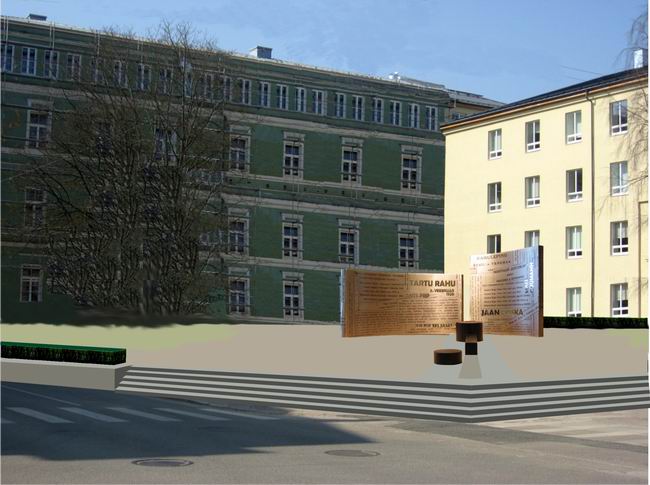
| 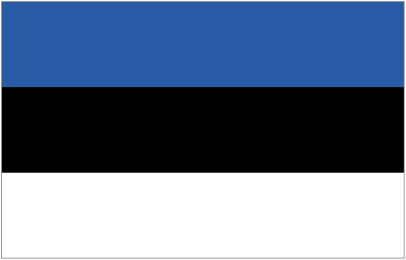 2008 - Tartu Rahu / Tartu Peace Treaty Monument, Tartu (Estonia). "On February 2, 1920, the Russian Soviet Federative Socialist Republic (brief predecessor to the USSR) renounced its rights to Estonia in perpetuity. Estonia, which had been under foreign domination for two centuries, marks this as its independence day." This is "Monday's Monument" #55. 2008 - Tartu Rahu / Tartu Peace Treaty Monument, Tartu (Estonia). "On February 2, 1920, the Russian Soviet Federative Socialist Republic (brief predecessor to the USSR) renounced its rights to Estonia in perpetuity. Estonia, which had been under foreign domination for two centuries, marks this as its independence day." This is "Monday's Monument" #55.
|
3 Peace Monuments in Georgia
Right click image to enlarge.



|   April 1988 - - The Peace Tree, Garden for Peace #1, Swan Woods Trail, Atlanta History Center, 130 West Paces Ferry Road, Atlanta, Georgia (USA). 14-foot life-size bronze statue created by Georgi (Gia) Japaridze, an artist from sister city Tbilisi (Republic of Georgia). April 1988 - - The Peace Tree, Garden for Peace #1, Swan Woods Trail, Atlanta History Center, 130 West Paces Ferry Road, Atlanta, Georgia (USA). 14-foot life-size bronze statue created by Georgi (Gia) Japaridze, an artist from sister city Tbilisi (Republic of Georgia). 
|
 

|  May 24, 1989 - Garden for Peace #2, Tibilisi (Georgia). Created by sister city Atlanta, Georgia (USA). Image shows Atlanta mayor Andrew Young. May 24, 1989 - Garden for Peace #2, Tibilisi (Georgia). Created by sister city Atlanta, Georgia (USA). Image shows Atlanta mayor Andrew Young. 
|
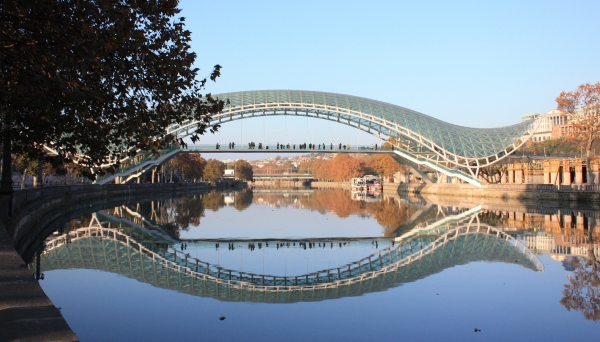
|  2010 - Bridge of Peace, Mtkvari River, Tbilisi (Georgia). "490 foot-long bow-shaped pedestrian bridge. Connects Old Tbilisi with the new district. Shimmers with an interactive light display at night generated by thousands of white LED's. The pulsating lights communicate, in Morse code, chemical elements from Mendeleev’s periodic table of the elements that make up a human body. The concept of the Italian designer Michele De Lucchi was 'the anthem of life & peace among people & nations.'" This is "Monday's Monument" #75. 2010 - Bridge of Peace, Mtkvari River, Tbilisi (Georgia). "490 foot-long bow-shaped pedestrian bridge. Connects Old Tbilisi with the new district. Shimmers with an interactive light display at night generated by thousands of white LED's. The pulsating lights communicate, in Morse code, chemical elements from Mendeleev’s periodic table of the elements that make up a human body. The concept of the Italian designer Michele De Lucchi was 'the anthem of life & peace among people & nations.'" This is "Monday's Monument" #75.
|
7 Peace Monuments in Hungary
Right click image to enlarge.

 |  1900 - Statues of War & Peace, Budapest History Museum, Buda Castle, Budapest (Hungary). "The monumental allegorical bronze statues are the work of Károly Senyey. Both War and Peace are represented by angels, one with a trumpet, the other with an olive branch. Under the angel of Peace is a returning soldier, while under the angel of War there is a dead Ottoman soldier & ancient Hungarian warriors." 1900 - Statues of War & Peace, Budapest History Museum, Buda Castle, Budapest (Hungary). "The monumental allegorical bronze statues are the work of Károly Senyey. Both War and Peace are represented by angels, one with a trumpet, the other with an olive branch. Under the angel of Peace is a returning soldier, while under the angel of War there is a dead Ottoman soldier & ancient Hungarian warriors."
|

 |  May 28, 1933 - Hungary Mourns Her Lost Children," Debrecen (Hungary). "In an act of reconciliation, the statue was carved by Frenchman Emile Guillaume and offered to Debrecen by British Viscount Lord Rothermere." Guillaume also sculpted La Délivrance (qv). May 28, 1933 - Hungary Mourns Her Lost Children," Debrecen (Hungary). "In an act of reconciliation, the statue was carved by Frenchman Emile Guillaume and offered to Debrecen by British Viscount Lord Rothermere." Guillaume also sculpted La Délivrance (qv). 
|
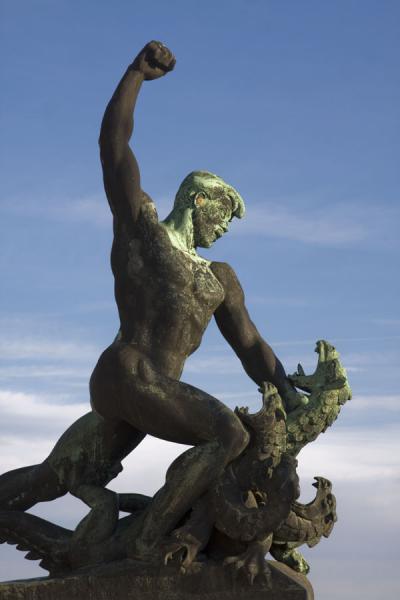

|  1947 - Statue representing the victory of good over evil, at the base of the Szabadság Szobor or Liberty Statue ( or Freedom Statue), Gellert Hill, Budapest (Hungary). Commemorates the Soviet liberation of Hungary from Nazi forces during World War II. Designed by Zsigmond Kisfaludi Stróbl. 1947 - Statue representing the victory of good over evil, at the base of the Szabadság Szobor or Liberty Statue ( or Freedom Statue), Gellert Hill, Budapest (Hungary). Commemorates the Soviet liberation of Hungary from Nazi forces during World War II. Designed by Zsigmond Kisfaludi Stróbl.
|

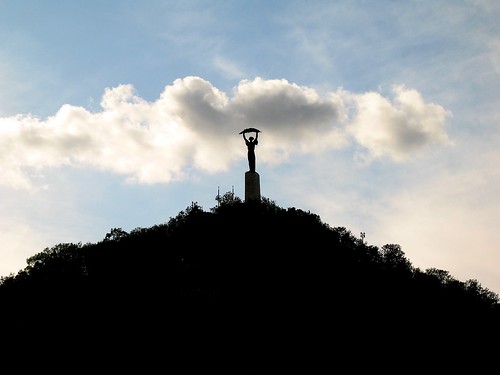

|  1947 - Peace Statue, Castle Hill, Budapest (Hungary). Overlooks the city. 14 meter tall bronze statue atop a 26 meter pedestal. Female figure holds a palm branch overhead. Designed by Zsigmond Kisfaludi to commemorate the liberation of Hungary during WW-II by the Soviets and originally called Szabadság-szobor / Liberty Statue. Today a symbol of peace. 1947 - Peace Statue, Castle Hill, Budapest (Hungary). Overlooks the city. 14 meter tall bronze statue atop a 26 meter pedestal. Female figure holds a palm branch overhead. Designed by Zsigmond Kisfaludi to commemorate the liberation of Hungary during WW-II by the Soviets and originally called Szabadság-szobor / Liberty Statue. Today a symbol of peace. 
|
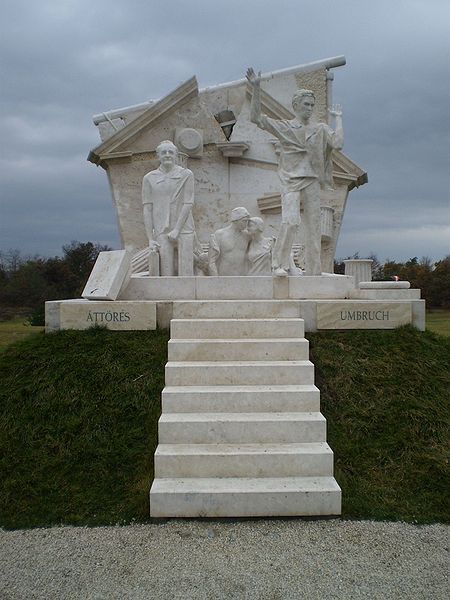  

|   About 1991 - Monuments celebrating the Pan-European Picnic, Sopron (Austria/Hungary). "The Pan-European Picnic / Paneuropäisches Picknick / páneurópai piknik was a peace demonstration held on the Austrian-Hungarian border near the town of Sopron on 19 August 1989, an important event during the Revolutions of 1989 that led to the fall of the Iron Curtain & the reunification of Germany... The place of the picnic is marked by a monument of Miklós Melocco [left image], by a bell presented from the city of Debrecen (Hungary) from where the idea of the Picnic emerged, a pagoda presented by the Association of the Japanese–Hungarian Friendship and by a wooden monument unveiled by the organisors [sic] in 1991. A large artwork made by Gabriela von Habsburg, a daughter of Otto von Habsburg, & symbolizing a Cross & a barbed wire [right image] can be found at the Cave Theatre of Fertorakos (Hungary), a few kilometres from the site. Hungarian President László Sólyom unveiled a white marble monument in memory of those who had risked their life to cross the Iron Curtain." About 1991 - Monuments celebrating the Pan-European Picnic, Sopron (Austria/Hungary). "The Pan-European Picnic / Paneuropäisches Picknick / páneurópai piknik was a peace demonstration held on the Austrian-Hungarian border near the town of Sopron on 19 August 1989, an important event during the Revolutions of 1989 that led to the fall of the Iron Curtain & the reunification of Germany... The place of the picnic is marked by a monument of Miklós Melocco [left image], by a bell presented from the city of Debrecen (Hungary) from where the idea of the Picnic emerged, a pagoda presented by the Association of the Japanese–Hungarian Friendship and by a wooden monument unveiled by the organisors [sic] in 1991. A large artwork made by Gabriela von Habsburg, a daughter of Otto von Habsburg, & symbolizing a Cross & a barbed wire [right image] can be found at the Cave Theatre of Fertorakos (Hungary), a few kilometres from the site. Hungarian President László Sólyom unveiled a white marble monument in memory of those who had risked their life to cross the Iron Curtain."
|
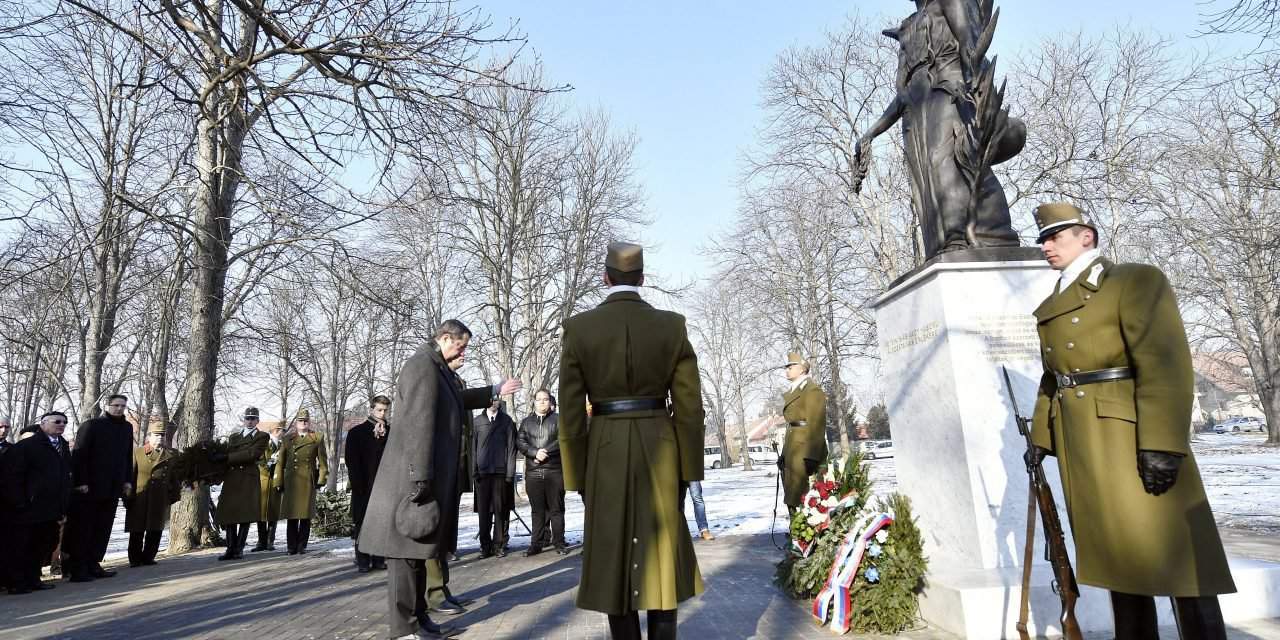
|  January 20, 2017 - "Angel of Peace," Esztergom (Hungary). "A military ceremony was held for the unveiling of the 'Angel of Peace' monument in a Soviet cemetery in Esztergom on Friday." /// "The WWI memorial, a statue depicting the Angel of Peace, is dedicated to the about 3,500 Italian, Romanian, Russian & Serbian prisoners of war who died in a camp set up just outside the city between 1914 & 1918. Mikhail Lavrenenko, president of the Russian foundation for peace that donated the statue to Esztergom, said that the memorial would be instrumental 'in saying no in today’s world to any military conflict no matter of its size.'" Click here for video. January 20, 2017 - "Angel of Peace," Esztergom (Hungary). "A military ceremony was held for the unveiling of the 'Angel of Peace' monument in a Soviet cemetery in Esztergom on Friday." /// "The WWI memorial, a statue depicting the Angel of Peace, is dedicated to the about 3,500 Italian, Romanian, Russian & Serbian prisoners of war who died in a camp set up just outside the city between 1914 & 1918. Mikhail Lavrenenko, president of the Russian foundation for peace that donated the statue to Esztergom, said that the memorial would be instrumental 'in saying no in today’s world to any military conflict no matter of its size.'" Click here for video. 
|
3 Peace Monuments in Kazakhstan
Right click image to enlarge.
 

|  2001 -
"Stronger Than Death," Semipalatinsk City (Kazakhstan). A memorial to the victims of Semipalatinsk nuclear tests (150-km west of Semipalatinsk City). "From 1949 until 1989 the Soviet Union conducted 456 nuclear tests at the Semipalatinsk Test Site. Experiments were conducted on the surface, underground & in the air, with 116 of these being atmospheric tests. Occasional mishaps resulted in dispersion of radioactive materials & leakage of radioactive gases into the environment.
Sometimes, residents of nearby villages were warned when an explosion was scheduled. They were advised to stay outside during the blast, since it could topple their houses...
Cases of cancer, impotency, leukemia & birth defects skyrocketed within a few years. Babies were born with severe neurological & major bone deformations, some without limbs..." /// Compare "Grief Tear" in New Jersey (USA). 2001 -
"Stronger Than Death," Semipalatinsk City (Kazakhstan). A memorial to the victims of Semipalatinsk nuclear tests (150-km west of Semipalatinsk City). "From 1949 until 1989 the Soviet Union conducted 456 nuclear tests at the Semipalatinsk Test Site. Experiments were conducted on the surface, underground & in the air, with 116 of these being atmospheric tests. Occasional mishaps resulted in dispersion of radioactive materials & leakage of radioactive gases into the environment.
Sometimes, residents of nearby villages were warned when an explosion was scheduled. They were advised to stay outside during the blast, since it could topple their houses...
Cases of cancer, impotency, leukemia & birth defects skyrocketed within a few years. Babies were born with severe neurological & major bone deformations, some without limbs..." /// Compare "Grief Tear" in New Jersey (USA).
|

|  August 2013? - Museum of Peace, Polkovnichiy Island, Semey (Kazakhstan). Kazakhstan hosted an international conference “From a Nuclear Test Ban to a Nuclear-Weapons-Free World”, August 27- 29, 2012. August 29 was the the UN International Day against Nuclear Testing on August 29, 2012. Part of the conference was held in Semey, including a ground-breaking ceremony for the unique Museum of Peace. The crystal-ball-shaped building will be five stories tall, with a height of 34 metres & a diametre of 24 metres, & will rest in the palms of hands, demonstrating the fragility of life & the need for careful stewardship of the environment. The foundation of the ball in the form of two palms of hands will be made from iron & granite, while the building itself will be constructed of glass. The construction process is scheduled to be completed one year later. Construction costs are estimated at more than one billion tenge & will be provided by the government. August 2013? - Museum of Peace, Polkovnichiy Island, Semey (Kazakhstan). Kazakhstan hosted an international conference “From a Nuclear Test Ban to a Nuclear-Weapons-Free World”, August 27- 29, 2012. August 29 was the the UN International Day against Nuclear Testing on August 29, 2012. Part of the conference was held in Semey, including a ground-breaking ceremony for the unique Museum of Peace. The crystal-ball-shaped building will be five stories tall, with a height of 34 metres & a diametre of 24 metres, & will rest in the palms of hands, demonstrating the fragility of life & the need for careful stewardship of the environment. The foundation of the ball in the form of two palms of hands will be made from iron & granite, while the building itself will be constructed of glass. The construction process is scheduled to be completed one year later. Construction costs are estimated at more than one billion tenge & will be provided by the government.
|
2 Peace Monuments in Kosovo
Right click image to enlarge.

| 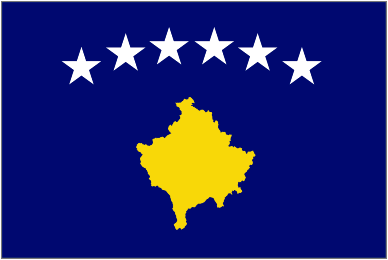 2009 - Manchester Peace Park, Podujevo, (Kosovo). "The Eden Project has been working in a long-term partnership with Manchester Aid to Kosovo (MAK) to develop an urban peace park in the town of Podujevo, which experienced cleansing in the civil war. Formally opened in 2009, the public space offers a sign of hope for the future as well as a way to remember & recover from the community’s trauma." 2009 - Manchester Peace Park, Podujevo, (Kosovo). "The Eden Project has been working in a long-term partnership with Manchester Aid to Kosovo (MAK) to develop an urban peace park in the town of Podujevo, which experienced cleansing in the civil war. Formally opened in 2009, the public space offers a sign of hope for the future as well as a way to remember & recover from the community’s trauma." 
|

|  2010 - Peace Monument, Bazdarana, Prizren (Kosovo). "Kosovo Albanian separatists have erected a NATO monument in Serbian city of Prizren thankful to that military organization for facilitating ethnic cleansing of Serbs & destruction of Serbian heritage.
The monument is erected in the Prizren suburb of Bazdarana where a road for Suva Reka begins.
Separatists have paid 54,651 EUROS for the pile of steel & concrete, and it is called Monument of Peace (kudos to Pavle Dejanovic from Belgrade for the info).
Given the name of this monument, it stands to reason that any organized & premeditated murdering of Serbs or facilitation thereof is described as 'peace' by the perpetrators.
Guess we are still waiting for the Monument of War to commemorate all the Serbs murdered by Albanian separatists & NATO." 2010 - Peace Monument, Bazdarana, Prizren (Kosovo). "Kosovo Albanian separatists have erected a NATO monument in Serbian city of Prizren thankful to that military organization for facilitating ethnic cleansing of Serbs & destruction of Serbian heritage.
The monument is erected in the Prizren suburb of Bazdarana where a road for Suva Reka begins.
Separatists have paid 54,651 EUROS for the pile of steel & concrete, and it is called Monument of Peace (kudos to Pavle Dejanovic from Belgrade for the info).
Given the name of this monument, it stands to reason that any organized & premeditated murdering of Serbs or facilitation thereof is described as 'peace' by the perpetrators.
Guess we are still waiting for the Monument of War to commemorate all the Serbs murdered by Albanian separatists & NATO."
|
2 Peace Monuments in Latvia
Right click image to enlarge.
 | 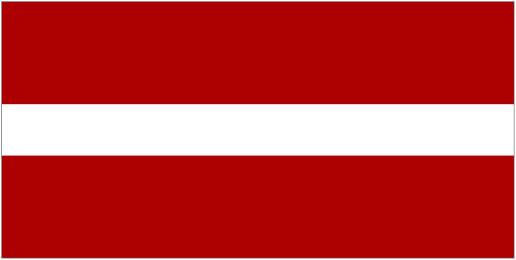 1988 - Memorial Stone, Riga (Latvia).
"The Great Choral Synagogue in German occupied Riga was burnt on July 4, 1938, with 300 Jews locked in the basement. The memorial stone was place a few feet from the burned foundation in 1988." /// NB: This information from the San Antonio Peace Center is seemingly inconsistent with the Wikipedia article linked above. 1988 - Memorial Stone, Riga (Latvia).
"The Great Choral Synagogue in German occupied Riga was burnt on July 4, 1938, with 300 Jews locked in the basement. The memorial stone was place a few feet from the burned foundation in 1988." /// NB: This information from the San Antonio Peace Center is seemingly inconsistent with the Wikipedia article linked above.
|

|  May 25, 2010 - Hiroshima Stone of Peace, Riga Castle, Riga (Latvia). "A granite plaque made of one of the tram track paving stones that was at ground zero on the day when an atomic bomb exploded in Hiroshima. Shows a goddess in prayer & has the text 'From Hiroshima.' Attached to a large field stone from Latvia. Will be temporary installed in the garden of the Riga Castle until the Garden of Destiny is finished & the stone is moved there. President Valdis Zatlers received the stone from the Hiroshima Stone of Peace Association (HSPA) which has presented the stone to more than 100 heads of state & government in the world, but this is the first ti the Stone of Peace is being presented -->in the Baltic States.
The HSPA was established in 1991 to promote peace in the world. Its aim is to present a stone to a head of state or government in every country in the world. A Japanese news agency, Kyodo News, has served as the secretariat for the HSPA ever since its establishment 19 years ago." May 25, 2010 - Hiroshima Stone of Peace, Riga Castle, Riga (Latvia). "A granite plaque made of one of the tram track paving stones that was at ground zero on the day when an atomic bomb exploded in Hiroshima. Shows a goddess in prayer & has the text 'From Hiroshima.' Attached to a large field stone from Latvia. Will be temporary installed in the garden of the Riga Castle until the Garden of Destiny is finished & the stone is moved there. President Valdis Zatlers received the stone from the Hiroshima Stone of Peace Association (HSPA) which has presented the stone to more than 100 heads of state & government in the world, but this is the first ti the Stone of Peace is being presented -->in the Baltic States.
The HSPA was established in 1991 to promote peace in the world. Its aim is to present a stone to a head of state or government in every country in the world. A Japanese news agency, Kyodo News, has served as the secretariat for the HSPA ever since its establishment 19 years ago." 
|
2 Peace Monuments in Lithuania
Right click image to enlarge.

|  1992 - Chiune Sugihara Memorial, Vilnius (Lithuania). By Vladas Vildžiunas and Goichi Kutogawa. Shiune Sugihara [1900-1986] was a Japanese diplomat who helped thousands of Jews leave the Soviet Union while serving as consul of the Empire of Japan in Lithuania. Vilnius is called "The Jerusalem of Lithuania." 1992 - Chiune Sugihara Memorial, Vilnius (Lithuania). By Vladas Vildžiunas and Goichi Kutogawa. Shiune Sugihara [1900-1986] was a Japanese diplomat who helped thousands of Jews leave the Soviet Union while serving as consul of the Empire of Japan in Lithuania. Vilnius is called "The Jerusalem of Lithuania." 
|

| M
U
S
E
U
M |  December 1999? - Sugihara House-Museum, 30 Vaizganto Street, Kaunas/Kovnos (Lithuania). Two-story residence at which Jewish refugees once lined up in their hundreds to receive visas form Shiune Sugihara [1900-1986], consul of the Empire of Japan in Lithuania. Kaunas is Lithuania's second largest city. December 1999? - Sugihara House-Museum, 30 Vaizganto Street, Kaunas/Kovnos (Lithuania). Two-story residence at which Jewish refugees once lined up in their hundreds to receive visas form Shiune Sugihara [1900-1986], consul of the Empire of Japan in Lithuania. Kaunas is Lithuania's second largest city. 
|
1 Peace Monument in Montenegro
Right click image to enlarge.

|  July 11, 2011 - VANDALIZED 2012 - Reconciliation Memorial, Pobrezje Park, Podgorica (Montenegro).
"While many of the post-war monuments in the Balkans represent divisive views of history, there have been some attempts to create memorials which actively promote reconciliation.
The inscription [of this monument] reads: 'To the civilian casualties of the wars in the former Yugoslavia in the period between 1991 & 2001 – never to be repeated.'
Inaugurated on the anniversary of the Srebrenica genocide [July 11-13, 1995]. According to the culture ministry, it expresses 'the entire society’s commitment to the generally accepted principles of justice' & Montenegro’s determination 'to build itself as a state based on the respect for the principles of the rule of law, tolerance & human rights.'
But in the year that followed its inauguration, the memorial was vandalised three times & the glass is now cracked & scored with scratches." EE 2011 VANDALIZED July 11, 2011 - VANDALIZED 2012 - Reconciliation Memorial, Pobrezje Park, Podgorica (Montenegro).
"While many of the post-war monuments in the Balkans represent divisive views of history, there have been some attempts to create memorials which actively promote reconciliation.
The inscription [of this monument] reads: 'To the civilian casualties of the wars in the former Yugoslavia in the period between 1991 & 2001 – never to be repeated.'
Inaugurated on the anniversary of the Srebrenica genocide [July 11-13, 1995]. According to the culture ministry, it expresses 'the entire society’s commitment to the generally accepted principles of justice' & Montenegro’s determination 'to build itself as a state based on the respect for the principles of the rule of law, tolerance & human rights.'
But in the year that followed its inauguration, the memorial was vandalised three times & the glass is now cracked & scored with scratches." EE 2011 VANDALIZED
|
14 Peace Monuments in Poland
Right click image to enlarge.
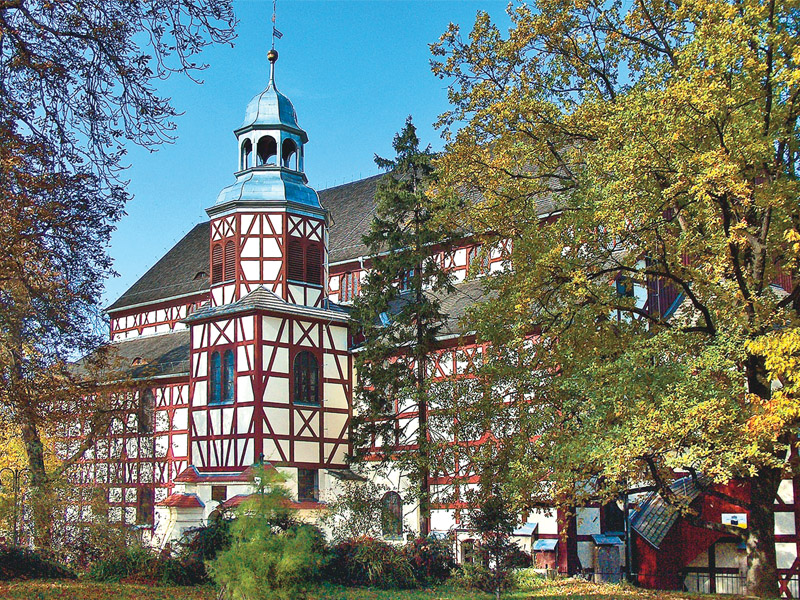
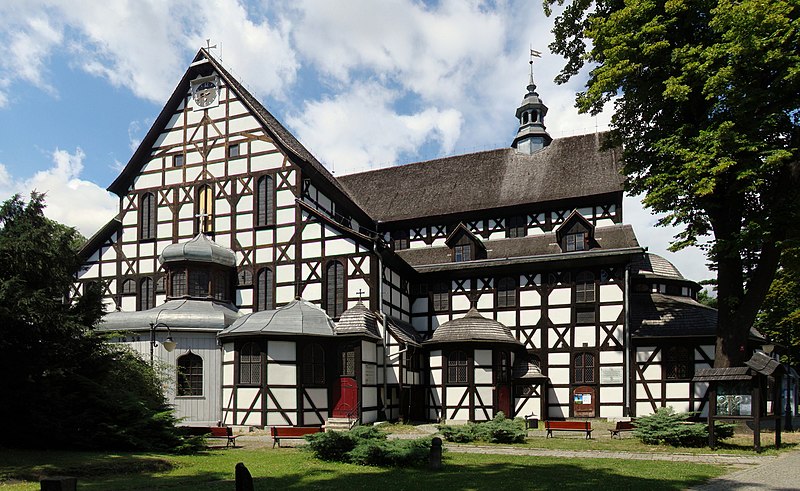

|  1655 & 1657 - Churches of Peace, Jawor & Swidnica (Poland). "The largest timber-framed religious buildings in Europe and a symbol of religious tolerance from the 17th century. After the Peace of Westphalia (1648), the Protestants in Silesia were allowed by the Habsburg Roman Catholic emperor to build three churches. Restrictions were that they had to be constructed outside the city walls, made of wood or clay & built in less than a year. The architect responsible for all three was Albrecht von Sabisch [1610-1688]. The churches had to be big enough to be a true place of refuge for the Protestant population. He designed wooden buildings that had never been seen before in complexity & size. The church in Glogów burned in 1758 The other two in Jawor & Swidnica were restored by Polish-German cooperation." 1655 & 1657 - Churches of Peace, Jawor & Swidnica (Poland). "The largest timber-framed religious buildings in Europe and a symbol of religious tolerance from the 17th century. After the Peace of Westphalia (1648), the Protestants in Silesia were allowed by the Habsburg Roman Catholic emperor to build three churches. Restrictions were that they had to be constructed outside the city walls, made of wood or clay & built in less than a year. The architect responsible for all three was Albrecht von Sabisch [1610-1688]. The churches had to be big enough to be a true place of refuge for the Protestant population. He designed wooden buildings that had never been seen before in complexity & size. The church in Glogów burned in 1758 The other two in Jawor & Swidnica were restored by Polish-German cooperation."
|


 |
 About 1950 - Massacre Memorial, Jedwabne (Poland). Left image shows "a group of rabbis plac[ing] stones on top of the memorial monument in Jedwabne.
Gross's 2001 book on the subject opened up the debate on Polish anti-Semitism." The Jedwabne pogrom (or massacre) was a massacre of at least 300 Polish Jews at Jedwabne in German occupied Poland on July 10, 1941. "Polish-American historian Jan T. Gross concluded that Germans were not present at the time of the crime and that the only perpetrators were Polish Gentiles." About 1950 - Massacre Memorial, Jedwabne (Poland). Left image shows "a group of rabbis plac[ing] stones on top of the memorial monument in Jedwabne.
Gross's 2001 book on the subject opened up the debate on Polish anti-Semitism." The Jedwabne pogrom (or massacre) was a massacre of at least 300 Polish Jews at Jedwabne in German occupied Poland on July 10, 1941. "Polish-American historian Jan T. Gross concluded that Germans were not present at the time of the crime and that the only perpetrators were Polish Gentiles."
|



|  July 1969 - Mainanek Memorial, Lublin (Poland). Least changed of the Nazi extermination camps.
"On the 25th anniversary of its liberation [by the Russian army], a large monument designed by Victor Tolkin was constructed at the site. It consists of two parts: a large gate monument at the camp's entrance (left image) & a large mausoleum (right image) holding ashes of the victims at its opposite end."
July 1969 - Mainanek Memorial, Lublin (Poland). Least changed of the Nazi extermination camps.
"On the 25th anniversary of its liberation [by the Russian army], a large monument designed by Victor Tolkin was constructed at the site. It consists of two parts: a large gate monument at the camp's entrance (left image) & a large mausoleum (right image) holding ashes of the victims at its opposite end."
|

|  May 9, 1971 -
Pomnik Martyrologii Dzieci / Monument of Children's Martyrdom, Park Szarych Szeregow / Gray Ranks, Marysinska, Lodz (Poland). Also called Broken Heart Monument. Dedicated on the 26th anniversary of Poland's victory over Germany. Commemorates the martyrdom of thousands of child prisoners who died here in a German concentration camp (Ghetto Litzmannstadt) during WW-II. Designed by Jadwiga Janus. Inscriptions: "Your life was taken, today we give You only memory" and "May it pass on to future generations our common cry: no more war, no more camps." May 9, 1971 -
Pomnik Martyrologii Dzieci / Monument of Children's Martyrdom, Park Szarych Szeregow / Gray Ranks, Marysinska, Lodz (Poland). Also called Broken Heart Monument. Dedicated on the 26th anniversary of Poland's victory over Germany. Commemorates the martyrdom of thousands of child prisoners who died here in a German concentration camp (Ghetto Litzmannstadt) during WW-II. Designed by Jadwiga Janus. Inscriptions: "Your life was taken, today we give You only memory" and "May it pass on to future generations our common cry: no more war, no more camps."
|
 | M
U
S
E
U
M |  Date? - Maria Sklodowska-Curie Museum, Freta Street 16, "Old Town," Warsaw (Poland). Replica of birthplace & former home of Marie Sklodowska [1867-1934]. (Original house destroyed by Germans after the Warsaw Uprising in 1944.) Marie lived in Poland until age 24, then moved to Paris, married Pierre Curie [1859-1906], and received two Nobel prizes -- for chemistry in 1903 and for physics in 1911. Date? - Maria Sklodowska-Curie Museum, Freta Street 16, "Old Town," Warsaw (Poland). Replica of birthplace & former home of Marie Sklodowska [1867-1934]. (Original house destroyed by Germans after the Warsaw Uprising in 1944.) Marie lived in Poland until age 24, then moved to Paris, married Pierre Curie [1859-1906], and received two Nobel prizes -- for chemistry in 1903 and for physics in 1911.
|

|  Date? - "Nigdy Wiecej Wojny / Never Again War," Westerplatte Peninsula, Gdansk (Poland). Where the German war against Poland began on September 1, 1939. Seventieth anniversary ceremony here notably lacked high-level US representation. Date? - "Nigdy Wiecej Wojny / Never Again War," Westerplatte Peninsula, Gdansk (Poland). Where the German war against Poland began on September 1, 1939. Seventieth anniversary ceremony here notably lacked high-level US representation.
|
 
 |
 August 1, 1989 - Pomnik Powstania Warszawskiego / Warsaw Uprising Monument, Krasinski Square, Warsaw (Poland). "The larger, elevated element shows a group of insurgents actively...running from the artistic vision of a collapsing building... The smaller element (left image) shows insurgents descending into a manhole – a reference to the use of Warsaw's sewer system by the insurgents to move across German-held territory during the uprising..." /// Right image shows President Donald Trump speaking here on July 6, 2017, instead of visiting the Warsaw Ghetto. August 1, 1989 - Pomnik Powstania Warszawskiego / Warsaw Uprising Monument, Krasinski Square, Warsaw (Poland). "The larger, elevated element shows a group of insurgents actively...running from the artistic vision of a collapsing building... The smaller element (left image) shows insurgents descending into a manhole – a reference to the use of Warsaw's sewer system by the insurgents to move across German-held territory during the uprising..." /// Right image shows President Donald Trump speaking here on July 6, 2017, instead of visiting the Warsaw Ghetto.
|




|  September 2, 1989 - Stolen in 2002 - World Peace Bell #5, Warsaw Municipal Park, Warsaw (Poland). One of 20 WPB's placed in 16 different countries by the World Peace Bell Association of Tokyo (Japan). /// According to Gabriella Nyman Novak of Warsaw (8 Jan 2014), this bell was stolen in 2002 & never recovered. She intends to make a "reconstruction of the original bell" and to "discuss the themes of war, peace, war-time traumas and possible solutions" at a happening which is "supposed to take place in June 2015." /// Left image copied from unidentified website. Right image courtesy of Gabriella Nyman Novak. Click here for YouTube video in Polish. September 2, 1989 - Stolen in 2002 - World Peace Bell #5, Warsaw Municipal Park, Warsaw (Poland). One of 20 WPB's placed in 16 different countries by the World Peace Bell Association of Tokyo (Japan). /// According to Gabriella Nyman Novak of Warsaw (8 Jan 2014), this bell was stolen in 2002 & never recovered. She intends to make a "reconstruction of the original bell" and to "discuss the themes of war, peace, war-time traumas and possible solutions" at a happening which is "supposed to take place in June 2015." /// Left image copied from unidentified website. Right image courtesy of Gabriella Nyman Novak. Click here for YouTube video in Polish. 
|

 |  1980 -
Monument, Gdansk (Poland). "Honors shipyard workers killed in Gdansk, the Baltic sea port, by government troops during unrest in 1970 which was triggered by food prices. The only monument built by a Communist government to victims of its own repression. Note that it consists of three tall crosses on which anchors are crucified." 1980 -
Monument, Gdansk (Poland). "Honors shipyard workers killed in Gdansk, the Baltic sea port, by government troops during unrest in 1970 which was triggered by food prices. The only monument built by a Communist government to victims of its own repression. Note that it consists of three tall crosses on which anchors are crucified."
|

 | M
U
S
E
U
M |  2000 - Solidarity Museum, Gdansk (Poland). Opened on the 20th anniversary of the 1980 shipyard strikes, traces the history of the Solidarity movement and Poland's struggle to wriggle out of the grip of communism. The 'Roads to Freedom' multimedia exhibit consists of two parts; in the outdoor portion you'll see a section of the Berlin Wall beside the wall Lech Walesa climbed to lead the shipyard workers, an armoured tank used to put down demonstrations and more. Inside, elaborate dioramas and props recreate the bare cupboards and empty shop shelves with only lard and vinegar of Poland in the 80s." 2000 - Solidarity Museum, Gdansk (Poland). Opened on the 20th anniversary of the 1980 shipyard strikes, traces the history of the Solidarity movement and Poland's struggle to wriggle out of the grip of communism. The 'Roads to Freedom' multimedia exhibit consists of two parts; in the outdoor portion you'll see a section of the Berlin Wall beside the wall Lech Walesa climbed to lead the shipyard workers, an armoured tank used to put down demonstrations and more. Inside, elaborate dioramas and props recreate the bare cupboards and empty shop shelves with only lard and vinegar of Poland in the 80s."
|
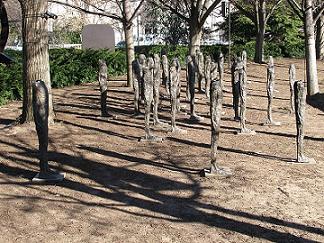
| 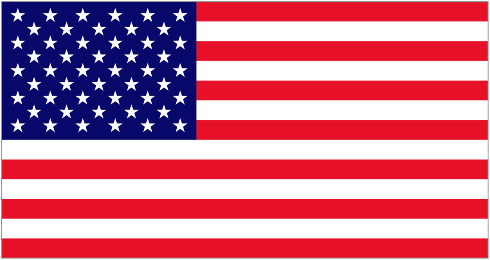  1999 - Puellae / Girls, Sculpture Garden, National Gallery of Art, Washington, DC (USA). "Testament to a story Polish artist Magdalena Abakanowicz heard about children who froze to death being tansported from Poland to Germany during World War II." 1999 - Puellae / Girls, Sculpture Garden, National Gallery of Art, Washington, DC (USA). "Testament to a story Polish artist Magdalena Abakanowicz heard about children who froze to death being tansported from Poland to Germany during World War II." 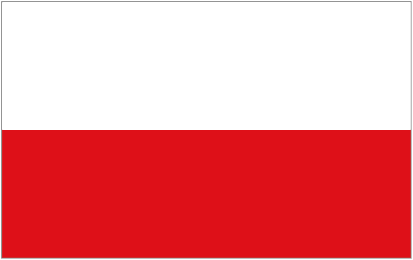
|

 |  June 24, 2011 - Paderewski Monument, Institute of Musicology, Jagiellonion University, Krakow (Poland). "Features a replica of a statue of Paderewski donated by Harry E. Blythe, resident of Paso Robles, California (USA). /// Ignacy Jan Paderewski [1860-1941] was a legendary Polish pianist, composer & statesman. "At the 1919 Paris Peace Conference, which formally concluded WW-I, Paderewski & US President Woodrow Wilson reestablished the borders of Poland with the signing & ratification of the Treaty of Versailles. Shortly thereafter, Paderewski became Poland's Prime Minister & Minister of Foreign Affairs." June 24, 2011 - Paderewski Monument, Institute of Musicology, Jagiellonion University, Krakow (Poland). "Features a replica of a statue of Paderewski donated by Harry E. Blythe, resident of Paso Robles, California (USA). /// Ignacy Jan Paderewski [1860-1941] was a legendary Polish pianist, composer & statesman. "At the 1919 Paris Peace Conference, which formally concluded WW-I, Paderewski & US President Woodrow Wilson reestablished the borders of Poland with the signing & ratification of the Treaty of Versailles. Shortly thereafter, Paderewski became Poland's Prime Minister & Minister of Foreign Affairs." 
|  |   October 4, 2007 - Paderewski Monument, Flora L. Thornton School of Music, University of Southern Californa, Los Angeles, California (USA). October 4, 2007 - Paderewski Monument, Flora L. Thornton School of Music, University of Southern Californa, Los Angeles, California (USA). 
|

|   Spring 2004 - Statue of Ignacy Jan Paderewski, Polish Embassy, Washington, DC (USA).
Life-sized, weighs approximately 400 pounds. Created by renowned sculptor Jessie Corsaut at the Monterey Sculpture Center in California. Heroic size statue of Paderewski as a young man. "Temporarily installed in the embassy garden until it can be relocated to a permanent public setting in the city." Donated by Harry E. Blythe III, a well known philanthropist, who owns a significant portion of Rancho San Ignacio in Paso Robles, California, formerly owned by Paderewski. Blythe is a lover of Paderewski's music & a collector of his memorabilia. Similar monuments at University of Southern California, at Rancho San Ignacio, & at Jagiellonion University in Krakow (Poland). Spring 2004 - Statue of Ignacy Jan Paderewski, Polish Embassy, Washington, DC (USA).
Life-sized, weighs approximately 400 pounds. Created by renowned sculptor Jessie Corsaut at the Monterey Sculpture Center in California. Heroic size statue of Paderewski as a young man. "Temporarily installed in the embassy garden until it can be relocated to a permanent public setting in the city." Donated by Harry E. Blythe III, a well known philanthropist, who owns a significant portion of Rancho San Ignacio in Paso Robles, California, formerly owned by Paderewski. Blythe is a lover of Paderewski's music & a collector of his memorabilia. Similar monuments at University of Southern California, at Rancho San Ignacio, & at Jagiellonion University in Krakow (Poland). 
|
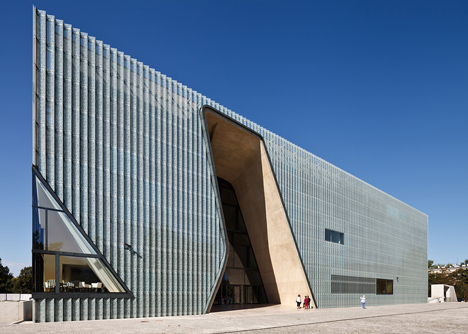 

|  October 28, 2014 - Museum of History of Polish Jews, Warsaw (Poland). On site of the former Warsaw Ghetto. Cornerstone laid in 2007, first opened on April 19, 2013, opened to public in October 2014. Features a multimedia narrative exhibition about the vibrant Jewish community that flourished in Poland for a thousand years. Information courtesy of Ambassador Victor Ashe. October 28, 2014 - Museum of History of Polish Jews, Warsaw (Poland). On site of the former Warsaw Ghetto. Cornerstone laid in 2007, first opened on April 19, 2013, opened to public in October 2014. Features a multimedia narrative exhibition about the vibrant Jewish community that flourished in Poland for a thousand years. Information courtesy of Ambassador Victor Ashe.
|



|  Future - Dom Pokoju / House of Peace, Fundacja Dom Pokoju / House of Peace Foundation, Plac Swietego Macieja 4/5/6, 50-224 Wroclaw (Poland).
"A center where preserving testimonies of people who live in the years 1933-1968 in the Middle Europe is joined by education for peace... Aim is to create center, which would be a peace monument, enabling meetings of various generations and cultures.
Foundation cultivates memory of people who died, were imprisoned or forced to misplace for political, racial, sexual or religious reasons in the years 1933-1968." Future - Dom Pokoju / House of Peace, Fundacja Dom Pokoju / House of Peace Foundation, Plac Swietego Macieja 4/5/6, 50-224 Wroclaw (Poland).
"A center where preserving testimonies of people who live in the years 1933-1968 in the Middle Europe is joined by education for peace... Aim is to create center, which would be a peace monument, enabling meetings of various generations and cultures.
Foundation cultivates memory of people who died, were imprisoned or forced to misplace for political, racial, sexual or religious reasons in the years 1933-1968."
|
1 Peace Monument in Romania
Right click image to enlarge.
 |  October 8, 2009 - Holocaust Memorial, Bucharest (Romania). "In memory of some 300,000 Jews and Gypsies killed during the Holocaust in the country... Romanian authorities set up the Elie Wiesel International Commission on the Holocaust in 2003 after one ministry in the Social Democratic government denied there had been a Holocaust in Romania during World War II." October 8, 2009 - Holocaust Memorial, Bucharest (Romania). "In memory of some 300,000 Jews and Gypsies killed during the Holocaust in the country... Romanian authorities set up the Elie Wiesel International Commission on the Holocaust in 2003 after one ministry in the Social Democratic government denied there had been a Holocaust in Romania during World War II."
|
34 Peace Monuments in Russia
Right click image to enlarge.
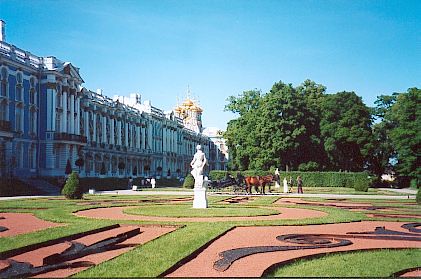
|  Circa 1735 - Allegory of Peace, Park of Bolshoy Catherine Palace, Tsarsoe Selo / Royal Village, 25 km south of St. Petersburg (Russia). By unknown Italian sculptor. Circa 1735 - Allegory of Peace, Park of Bolshoy Catherine Palace, Tsarsoe Selo / Royal Village, 25 km south of St. Petersburg (Russia). By unknown Italian sculptor.
|
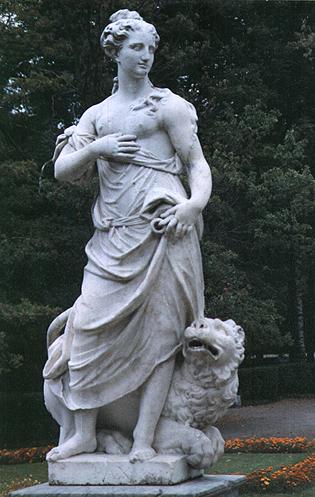

|  Circa 1735 - Statue of Pax, Garden of Pavlovsk Palace, St. Petersburg (Russia). By P. Baratta, "a master of the Venetian school." The palace contains "the Hall of Peace, decorated by Brenna, [which] repeats the layout and general architectural forms of the Hall of War, but is the latter's exact opposite in the motifs of its decor. It is ornamented with emblems of the arts, farming implements, sheaves of grain, basketfuls of flowers or fruit, musical instruments, clusters of grapes, cornucopias, etc.; in other words, attributes typical of the eighteenth-century cult of nature and idealization of rural life, and associated with the idea of peace." Circa 1735 - Statue of Pax, Garden of Pavlovsk Palace, St. Petersburg (Russia). By P. Baratta, "a master of the Venetian school." The palace contains "the Hall of Peace, decorated by Brenna, [which] repeats the layout and general architectural forms of the Hall of War, but is the latter's exact opposite in the motifs of its decor. It is ornamented with emblems of the arts, farming implements, sheaves of grain, basketfuls of flowers or fruit, musical instruments, clusters of grapes, cornucopias, etc.; in other words, attributes typical of the eighteenth-century cult of nature and idealization of rural life, and associated with the idea of peace."
|
 |  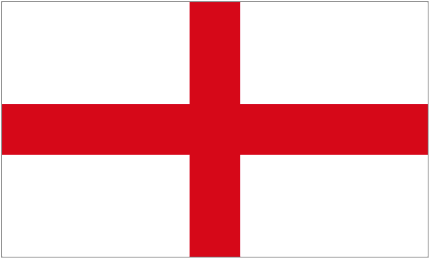 After 14 June 1814 - Vase of Siberian Jasper, Merton College, Oxford University, Oxford (England). Danziger's article also depicts a "vase of Siberian jasper sent to Merton College by Tsar Alexander I [1777-1825] & his sister Ekaterina Pavlovna [1788-1819] in thanks after lodging there [during the peace celebration] on the night of 14 June 1814." (This is similar to the vase [qv] given by Russia to the Peace Palace in The Hague 100 years later.) After 14 June 1814 - Vase of Siberian Jasper, Merton College, Oxford University, Oxford (England). Danziger's article also depicts a "vase of Siberian jasper sent to Merton College by Tsar Alexander I [1777-1825] & his sister Ekaterina Pavlovna [1788-1819] in thanks after lodging there [during the peace celebration] on the night of 14 June 1814." (This is similar to the vase [qv] given by Russia to the Peace Palace in The Hague 100 years later.) 
|
 |  1871 - "Apotheosis of War," Tretyakov Gallery, Moscow (Russia). Oil on canvas by Russian artist Vasily Vasilyevich Vereshchagin [1842–1904]. Dedicated by the artist "to all conquerors, past, present and to come" -- or ""to all conquerors, who were, who are, and who will be." Either way, an unambiguous condemnation of war. 1871 - "Apotheosis of War," Tretyakov Gallery, Moscow (Russia). Oil on canvas by Russian artist Vasily Vasilyevich Vereshchagin [1842–1904]. Dedicated by the artist "to all conquerors, past, present and to come" -- or ""to all conquerors, who were, who are, and who will be." Either way, an unambiguous condemnation of war.
|
.JPG)  
 |  August 28, 1913 - Russian Vase, Vredespaleis / Peace Palace, Carnegieplein 2, The Hague (Netherlands). "Weighs about 1,200 kilos & bears the emblem of the Romanovs, a two-headed eagle." Inscribed "Don de S.M. l'Empereur de Russie NICOLAS. II / Gift of H.E. the Emperor of Russia NICOLAS II." In 1998. Nicolas II [1868-1918] invited all major nations to attend an international conference on peace & disarmament, leading to the First Hague Peace Conference in 1899. August 28, 1913 - Russian Vase, Vredespaleis / Peace Palace, Carnegieplein 2, The Hague (Netherlands). "Weighs about 1,200 kilos & bears the emblem of the Romanovs, a two-headed eagle." Inscribed "Don de S.M. l'Empereur de Russie NICOLAS. II / Gift of H.E. the Emperor of Russia NICOLAS II." In 1998. Nicolas II [1868-1918] invited all major nations to attend an international conference on peace & disarmament, leading to the First Hague Peace Conference in 1899.
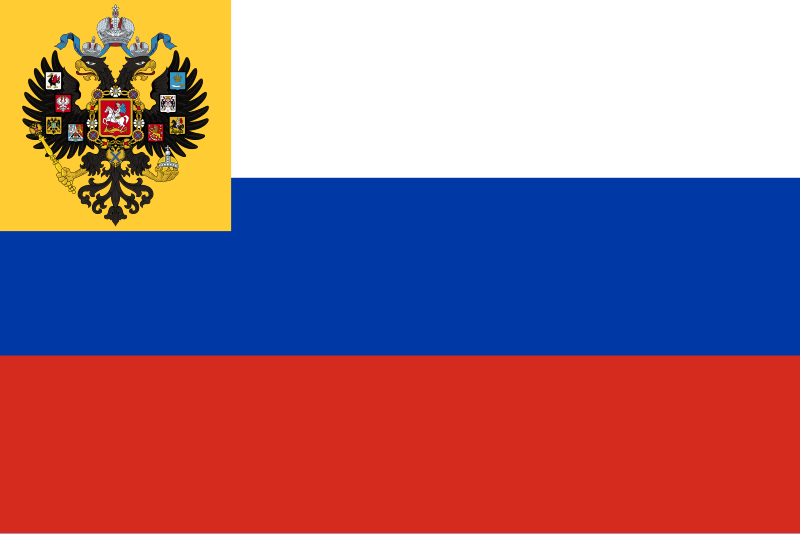
|
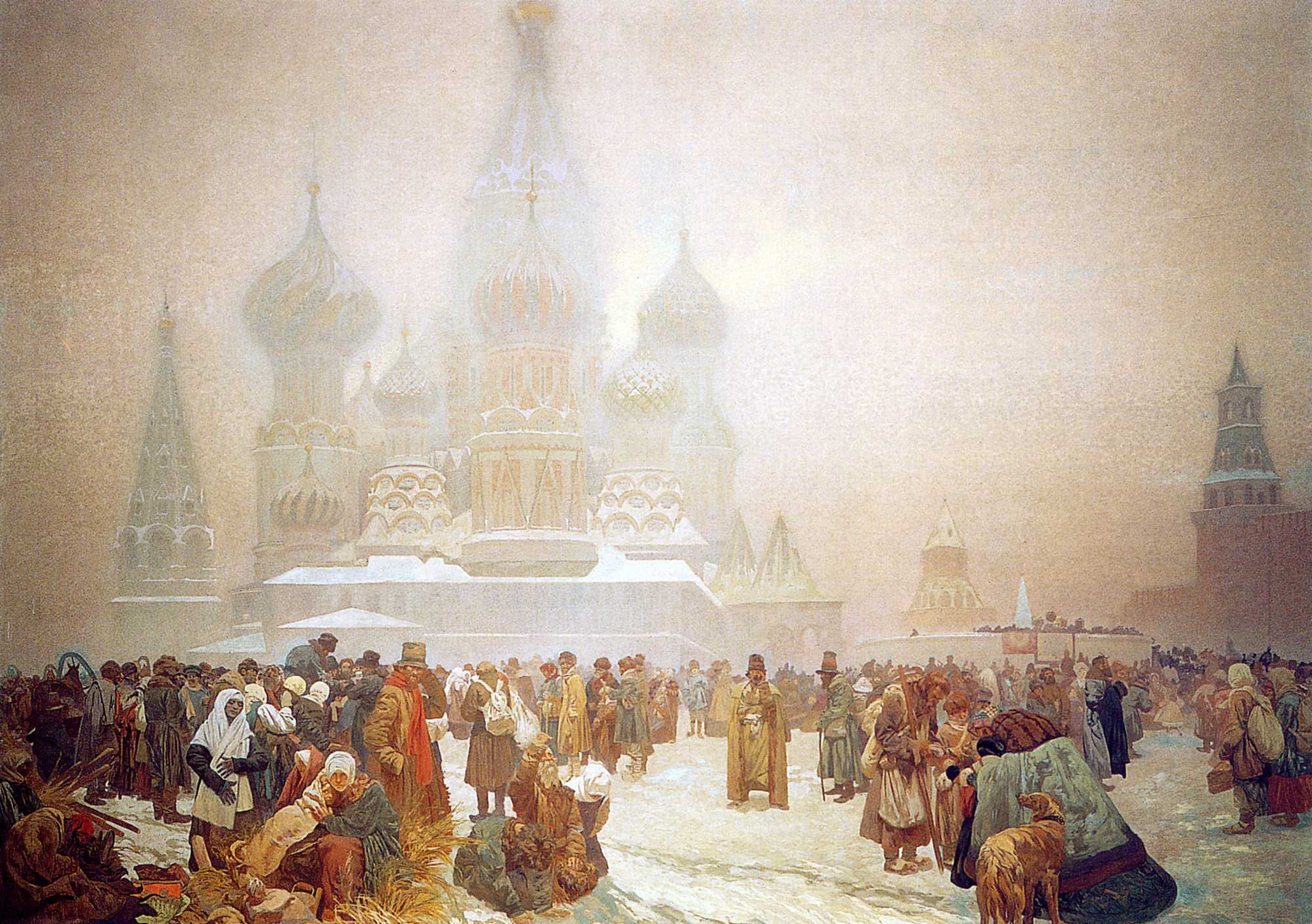
|  1914 - "Abolition of Serfdom in Russia in 1861: Freedom for Labour… A Charter for the Nation." From the cycle “The Slavonic Epic”, nr 19, by Bohemian Alfons Maria Mucha [1860-1939]. "Although the subject is one of the most contemporaneous to Mucha’s lifetime, this was one of the first of the Slav Epic canvases to be completed. Mucha visited Russia in 1913 & discovered that the great Slavic nation & ally that he so revered was in fact besieged with poverty & suffering and significantly less advanced than the rest of Europe.
When Tsar Alexander II came to the throne in 1855, he instigated a number of reforms, including the Emancipation Edict in 1861 which gave Russian serfs personal freedom. For Mucha, this reform was too long overdue to be of any virtue. Uncertain of how the reform will improve their condition, Mucha’s subdued crowd of Russian peasants looks on anxiously as the official reads the edict. St. Basil’s cathedral & the Kremlin beyond are barely discernible through the thick shroud of fog which captures the uncertainty of the moment. The distant sun is just palpable through the cloud & offers a faint flicker of hope for a brighter future. Again, Mucha includes the figure of a mother & child to express both the fear & hope associated with future generations." /// Where is this painting today? 1914 - "Abolition of Serfdom in Russia in 1861: Freedom for Labour… A Charter for the Nation." From the cycle “The Slavonic Epic”, nr 19, by Bohemian Alfons Maria Mucha [1860-1939]. "Although the subject is one of the most contemporaneous to Mucha’s lifetime, this was one of the first of the Slav Epic canvases to be completed. Mucha visited Russia in 1913 & discovered that the great Slavic nation & ally that he so revered was in fact besieged with poverty & suffering and significantly less advanced than the rest of Europe.
When Tsar Alexander II came to the throne in 1855, he instigated a number of reforms, including the Emancipation Edict in 1861 which gave Russian serfs personal freedom. For Mucha, this reform was too long overdue to be of any virtue. Uncertain of how the reform will improve their condition, Mucha’s subdued crowd of Russian peasants looks on anxiously as the official reads the edict. St. Basil’s cathedral & the Kremlin beyond are barely discernible through the thick shroud of fog which captures the uncertainty of the moment. The distant sun is just palpable through the cloud & offers a faint flicker of hope for a brighter future. Again, Mucha includes the figure of a mother & child to express both the fear & hope associated with future generations." /// Where is this painting today? 
|
December 10, 1922 - Union of Soviet Socialist Republics (USSR) created.

|  Date? - "Blown up Tree," Saint Petersburg (Russia). Nobel monument on the bank of the River Neva. "Born in Stockholm, Alfred Nobel [1833-1896] went with his family in 1842 to Saint Petersburg, where his father (who had invented modern plywood) started a 'torpedo' works. When Alfred was 18, he went to the United States to study chemistry for four years." Date? - "Blown up Tree," Saint Petersburg (Russia). Nobel monument on the bank of the River Neva. "Born in Stockholm, Alfred Nobel [1833-1896] went with his family in 1842 to Saint Petersburg, where his father (who had invented modern plywood) started a 'torpedo' works. When Alfred was 18, he went to the United States to study chemistry for four years."
|

|  1954 - "Friendship of Nations" Fountain, All-Russian Exhibition Center (VVTs), Moscow (Russia). "The VVTs was foundated at 1939 as agricaltural exhibition of Soviet Union. The Fountain has gilded statues of maidens in the national costumes of the sixteen Soviet republics demurely encircle a golden wheat sheaf." 1954 - "Friendship of Nations" Fountain, All-Russian Exhibition Center (VVTs), Moscow (Russia). "The VVTs was foundated at 1939 as agricaltural exhibition of Soviet Union. The Fountain has gilded statues of maidens in the national costumes of the sixteen Soviet republics demurely encircle a golden wheat sheaf." 
|
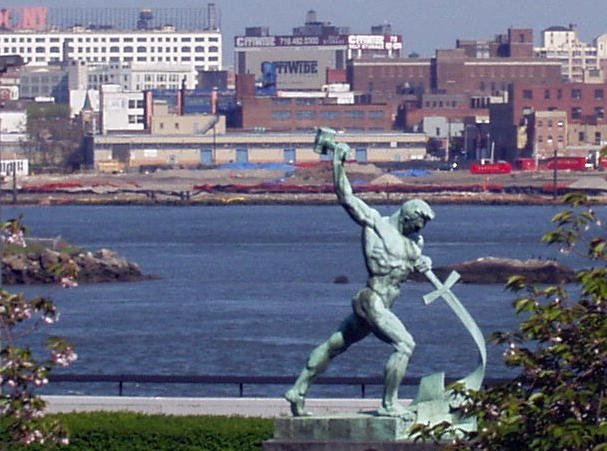
|   1959 - "Let Us Beat Swords into Plowshares", United Nations, New York City, New York (USA). Bronze statue sculpted by Evgeniy Vuchetich to represent the human wish to end all wars by converting the weapons of death and destruction into peaceful and productive tools that are more beneficial to mankind. Donated to the UN by the Soviet Union. 1959 - "Let Us Beat Swords into Plowshares", United Nations, New York City, New York (USA). Bronze statue sculpted by Evgeniy Vuchetich to represent the human wish to end all wars by converting the weapons of death and destruction into peaceful and productive tools that are more beneficial to mankind. Donated to the UN by the Soviet Union. 
|
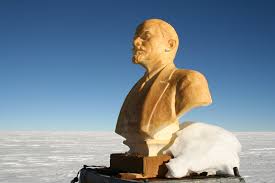


|  1959 - Bust of Lenin, Pole of Inaccessibility, Antarctica. "You will probably never find a more perfect embodiment of Shelley's 'Ozymandias' than this story of a surprising discovery by a joint Norwegian-U.S. antarctic expedition. The team traveled to 'Inaccessibility Pole,' which lays about 550 miles from the South Pole, at the furthest point from the ocean.
Scientists trekking across a little visited part of Antarctica have discovered a bizarre relic of the Soviet Union is dominating the South Pole of Inaccessibility.
In the middle of nowhere – literally the point on Antarctica furthest from the sea – an imposing bust of revolutionary Bolshevik Vladimir Lenin [1870-1924] peers out onto the polar emptiness...
The group's website says Soviet scientists first visited the Pole in December 1958 and built a small cabin there.
After several weeks they left, putting the bust of Lenin on top of the chimney facing Moscow.
"Today the bust is clearly visible from many kilometres away, and remains as they left it on the chimney, although the cabin itself is buried under the snow," the explorers say...
They all speculated on what the bust might have been made out of; marble or concrete.
“You wouldn’t believe it. He’s plastic,” he said.
The accompanying photo is from the team's website.
As the chief architect of one of history's most genocidal regimes, a man responsible for the death of millions, it's fitting that his statue is made of plastic. And just like Shelley's Ozymandias, his memorial sits amidst a desolate wasteland." 1959 - Bust of Lenin, Pole of Inaccessibility, Antarctica. "You will probably never find a more perfect embodiment of Shelley's 'Ozymandias' than this story of a surprising discovery by a joint Norwegian-U.S. antarctic expedition. The team traveled to 'Inaccessibility Pole,' which lays about 550 miles from the South Pole, at the furthest point from the ocean.
Scientists trekking across a little visited part of Antarctica have discovered a bizarre relic of the Soviet Union is dominating the South Pole of Inaccessibility.
In the middle of nowhere – literally the point on Antarctica furthest from the sea – an imposing bust of revolutionary Bolshevik Vladimir Lenin [1870-1924] peers out onto the polar emptiness...
The group's website says Soviet scientists first visited the Pole in December 1958 and built a small cabin there.
After several weeks they left, putting the bust of Lenin on top of the chimney facing Moscow.
"Today the bust is clearly visible from many kilometres away, and remains as they left it on the chimney, although the cabin itself is buried under the snow," the explorers say...
They all speculated on what the bust might have been made out of; marble or concrete.
“You wouldn’t believe it. He’s plastic,” he said.
The accompanying photo is from the team's website.
As the chief architect of one of history's most genocidal regimes, a man responsible for the death of millions, it's fitting that his statue is made of plastic. And just like Shelley's Ozymandias, his memorial sits amidst a desolate wasteland."

|
  

| 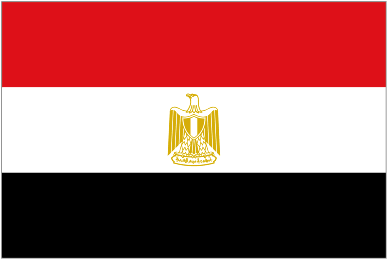 1971 - Egyptian-Russian Friendship Monument, Aswan High Dam, Nile River, Egypt. 71-meter tower designed by Soviet sculptor Ernst Neizvestny. Commemorates Soviet help in the construction of the Aswan High Dam. Also known as the Lotus Flower Tower. 1971 - Egyptian-Russian Friendship Monument, Aswan High Dam, Nile River, Egypt. 71-meter tower designed by Soviet sculptor Ernst Neizvestny. Commemorates Soviet help in the construction of the Aswan High Dam. Also known as the Lotus Flower Tower. 
|



|
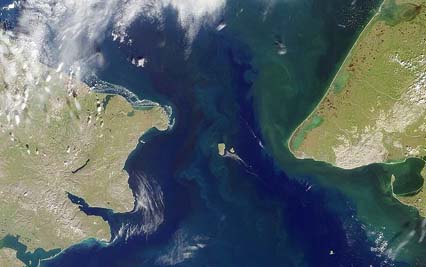
|
 


|
1986-1991 - Arctic Arc,
Cape Dezhnev, Naukan (Russia) & Cape Prince of Wales, Wales, Alaska (USA).
A joint project by Michigan sculptor David Barr and Alaskan artist Joe Senungetuk. Two "sculpture installations" evoking a bird, a boat, and a hand extended in friendship. About 60 miles (97 km) apart on each side of the Bering Sea at sites of the first human migrations into North America. According to Barr, "the two sculptures are a peaceful symbol for a border of international tension."
|

 |  June 1, 1988 - Nagasaki Peace Bell, Piskarevsky Memorial Cemetery, St. Petersburg (Russia). Western style bell. "Gift from the Nagasaki people to Leningrad." In 1985, the USSR erected a "Statue of Peace" in Nagasaki's Peace Symbols Zone (qv). June 1, 1988 - Nagasaki Peace Bell, Piskarevsky Memorial Cemetery, St. Petersburg (Russia). Western style bell. "Gift from the Nagasaki people to Leningrad." In 1985, the USSR erected a "Statue of Peace" in Nagasaki's Peace Symbols Zone (qv).  
|



| 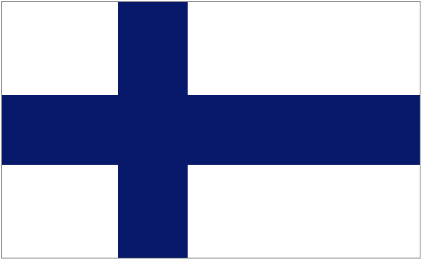 January 14, 1990 - "World Peace" statue, Helsinki (Finland). "A reminder of cold war in Helsinki. It was 'given' by the city of Moscow just before the collapse of Soviet Union. If Helsinki would have refused the 'gift,' relations with the big neighbour would have suffered." "The artist's name is Oleg Kirjuhin. The statue is actually a copy. Similar copies have been placed in cities around the former Soviet Union. Helsinki might be the only city outside the former Soviet Union that has it's own." January 14, 1990 - "World Peace" statue, Helsinki (Finland). "A reminder of cold war in Helsinki. It was 'given' by the city of Moscow just before the collapse of Soviet Union. If Helsinki would have refused the 'gift,' relations with the big neighbour would have suffered." "The artist's name is Oleg Kirjuhin. The statue is actually a copy. Similar copies have been placed in cities around the former Soviet Union. Helsinki might be the only city outside the former Soviet Union that has it's own." 
|

|  1990 - Peacemakers Monument, Federation of Peace and Conciliation, 36 Prospect Mira, Moscow (Russia). Commemorating the handshake between President Ronald Reagan and Mikhail Gorbachev on December 7, 1987. Identical monument at Shenandoah University, Winchester,Virginia (USA). 1990 - Peacemakers Monument, Federation of Peace and Conciliation, 36 Prospect Mira, Moscow (Russia). Commemorating the handshake between President Ronald Reagan and Mikhail Gorbachev on December 7, 1987. Identical monument at Shenandoah University, Winchester,Virginia (USA). 
|

| H
A
N
D
S |   October 22, 1992 - Peacemakers Monument, Shenandoah University, Winchester,Virginia (USA). Commemorating the handshake between President Ronald Reagan and Mikhail Gorbachev on December 7, 1987. October 22, 1992 - Peacemakers Monument, Shenandoah University, Winchester,Virginia (USA). Commemorating the handshake between President Ronald Reagan and Mikhail Gorbachev on December 7, 1987. 
|


|   September 1990 - Good Defeats Evil, UN Gardens near 47th Street, United Nations, New York City, New York (USA). Forty-foot metal statue of St. George brandishing a crucifix as he slays a nuclear dragon. Gift of the Soviet Union. Sculpted by Zurab Tsereteli who also made the Tear Drop memorial for 9/11 in Bayonne, New Jersey in 2006 (qv). September 1990 - Good Defeats Evil, UN Gardens near 47th Street, United Nations, New York City, New York (USA). Forty-foot metal statue of St. George brandishing a crucifix as he slays a nuclear dragon. Gift of the Soviet Union. Sculpted by Zurab Tsereteli who also made the Tear Drop memorial for 9/11 in Bayonne, New Jersey in 2006 (qv). 
|
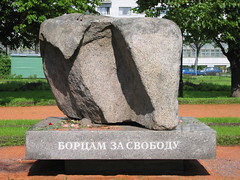
|  October 30, 1990 - Memorial to the Victims of the Gulag, Lubyanka Square, Moscow (Russia). "Through the efforts of the "Memorial" society, the memorial (a simple stone from the Solovetskiy penal colony, Solovki) was erected near the KGB headquarters beside the Iron Felix. (The latter was removed in August 1991 - image at far right.)
The efforts of Memorial were behind the Law on Rehabilitation of Victims of Political Repression, which was passed in 1991. In 1991 Memorial also contributed to the Supreme Soviet of the RSFSR officially making October 30 a Day of Remembrance for the Victims of Political Repression." October 30, 1990 - Memorial to the Victims of the Gulag, Lubyanka Square, Moscow (Russia). "Through the efforts of the "Memorial" society, the memorial (a simple stone from the Solovetskiy penal colony, Solovki) was erected near the KGB headquarters beside the Iron Felix. (The latter was removed in August 1991 - image at far right.)
The efforts of Memorial were behind the Law on Rehabilitation of Victims of Political Repression, which was passed in 1991. In 1991 Memorial also contributed to the Supreme Soviet of the RSFSR officially making October 30 a Day of Remembrance for the Victims of Political Repression."
| 
|
December 26, 1991 - Russian Federation created.


 | 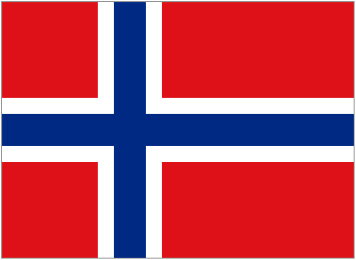 September 21, 1997 - Pax-Stien / "Pax" (Peace Memorial), near Lindesnes, Vest-Agder (Norway). At southernmost point of the Norwegian mainland. "On 21st October 1942, M/S Palatea, a German ship carrying prisoners of war, was torpedoed off Lindesnes lighthouse. 915 Russian prisoners & 71 Germans perished." /// "Unveiled by King Harald V of Norway, the memorial monument was designed by sculptor Arne Vinje Gunnerud [1930-2007]. It consists of a Common Buzzard in bronze with unfolded wings, on a platform of natural rock. A 986-strong choir, one singer for every life lost on the ship, sang at the unveiling of the monument." /// "The statue is of 'Russian bird' of the kind woodcut by so many russian prisoners-of-war during the war [sic]." September 21, 1997 - Pax-Stien / "Pax" (Peace Memorial), near Lindesnes, Vest-Agder (Norway). At southernmost point of the Norwegian mainland. "On 21st October 1942, M/S Palatea, a German ship carrying prisoners of war, was torpedoed off Lindesnes lighthouse. 915 Russian prisoners & 71 Germans perished." /// "Unveiled by King Harald V of Norway, the memorial monument was designed by sculptor Arne Vinje Gunnerud [1930-2007]. It consists of a Common Buzzard in bronze with unfolded wings, on a platform of natural rock. A 986-strong choir, one singer for every life lost on the ship, sang at the unveiling of the monument." /// "The statue is of 'Russian bird' of the kind woodcut by so many russian prisoners-of-war during the war [sic]."  
|

 |  May 28, 2003 - Tower of Peace, Sennaya Ploschad, St. Petersburg (Russia). Designed by French sculptor Clara Halter for St. Petersburg's 300th anniversary. Other peace monuments by Clara Halter are in Paris (France), Hiroshima (Japan) & Jerusalem (Israel). May 28, 2003 - Tower of Peace, Sennaya Ploschad, St. Petersburg (Russia). Designed by French sculptor Clara Halter for St. Petersburg's 300th anniversary. Other peace monuments by Clara Halter are in Paris (France), Hiroshima (Japan) & Jerusalem (Israel). 
|


![]()
![]() |  After 2004 - "Kind Angel of Peace," Beslan, Pravoberezhny District, Republic of North Ossetia–Alania (Russia). "Architectural and sculptural composition "Kind Angel of Peace" in memory of the victims of the terrorist act at school No. 1 in September 2004." After 2004 - "Kind Angel of Peace," Beslan, Pravoberezhny District, Republic of North Ossetia–Alania (Russia). "Architectural and sculptural composition "Kind Angel of Peace" in memory of the victims of the terrorist act at school No. 1 in September 2004."
|
 |  Date? - "Kind Angel of Peace," "Fallen Monument Park," Moscow (Russia). "This park was formerly called Park of the Fallen Heroes. In Russian, the park is either simply named Sculpture Park of the Central House of Artists or referred to by its legal title, Muzeon Park of Arts." Date? - "Kind Angel of Peace," "Fallen Monument Park," Moscow (Russia). "This park was formerly called Park of the Fallen Heroes. In Russian, the park is either simply named Sculpture Park of the Central House of Artists or referred to by its legal title, Muzeon Park of Arts."
|
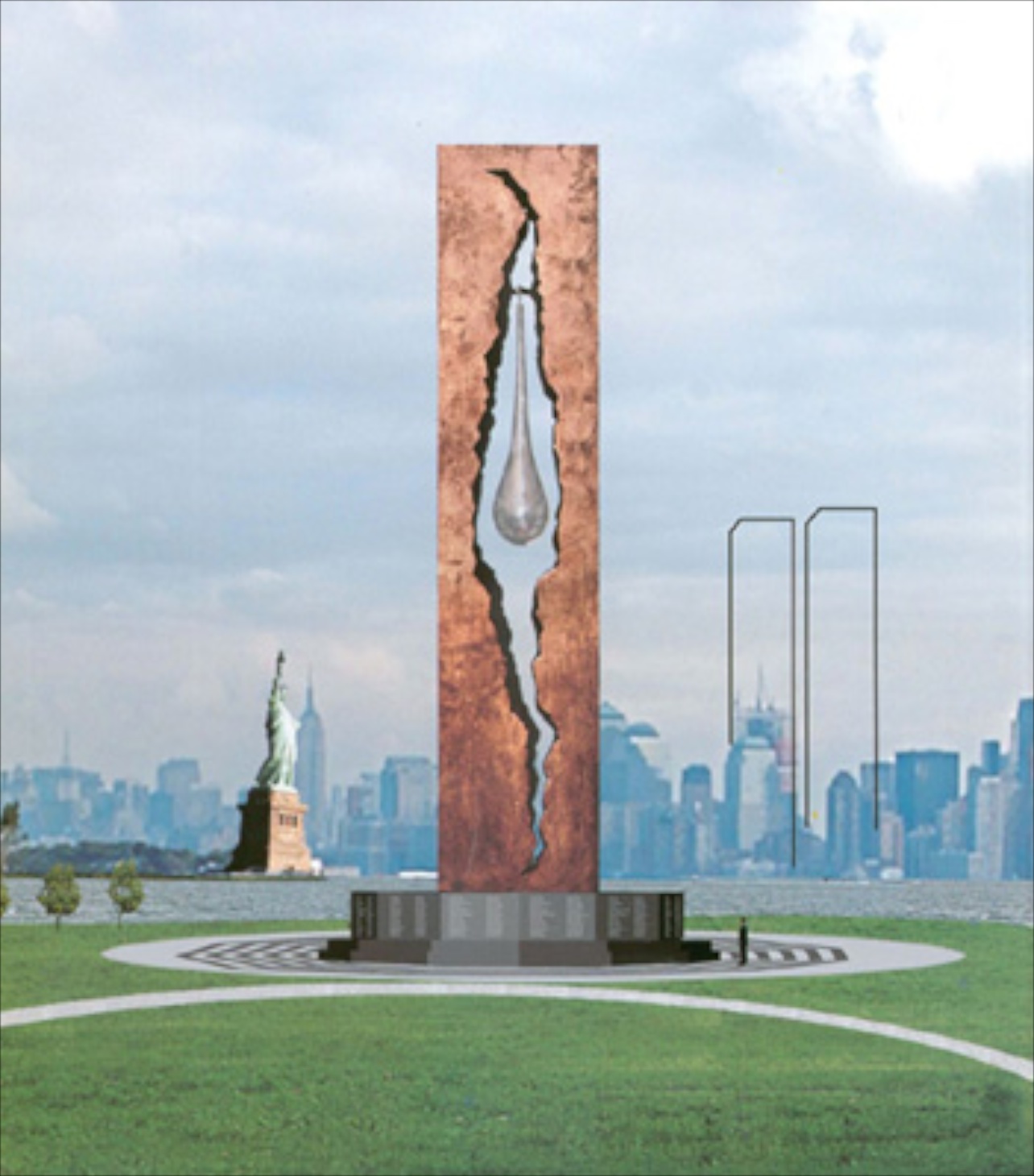

|   September 11, 2006 - "To the Struggle Against World Terrorism," Bayonne, New Jersey (USA).
Also known as the Tear of Grief & the Tear Drop Memorial.
"...opened to the anthems of Russia & the USA. On the bank of the Hudson River [facing the Statue of Liberty & Lower Manhattan], is a split 30-meter bronze plate with a giant tear made of titanium. The names of almost 3 thousand people killed on September, 11, 2001, are engraved on the monument. ...gift of Russian people, so sculptor Zurab Tsereteli who also and his colleagues took all the expenses on its erection up [sic]." Tsereteli also sculpted the statue of Good Defeats Evil (qv) at UN headquarters in 1990. September 11, 2006 - "To the Struggle Against World Terrorism," Bayonne, New Jersey (USA).
Also known as the Tear of Grief & the Tear Drop Memorial.
"...opened to the anthems of Russia & the USA. On the bank of the Hudson River [facing the Statue of Liberty & Lower Manhattan], is a split 30-meter bronze plate with a giant tear made of titanium. The names of almost 3 thousand people killed on September, 11, 2001, are engraved on the monument. ...gift of Russian people, so sculptor Zurab Tsereteli who also and his colleagues took all the expenses on its erection up [sic]." Tsereteli also sculpted the statue of Good Defeats Evil (qv) at UN headquarters in 1990.

|

![]() |  2007 - "Kind Angel of Peace," Park of 850th Anniversary of Moscow, Moscow (Russia).
"The tallest world's sculpture "Kind Angel of Peace" with a height of 135 meters will be built on five continents.
The environmental organization TERRA VIVA initiated the construction of the first "Angel" 5 years ago to unite all people with the idea of Kindness & Peace.
"This idea of uniting people living according the principles of goodness & justice, came on the eve of the third millennium. There is a need to create a unifying moral principle. And so a symbol was created - the "Kind Angel of Peace."
The author & chief architect of the international project is the honored Russian artist Peter Stronsky.
For the first "Kind Angel of Peace" will come to Europe.
It will be constructed on the island of Cyprus.
The other four continents have not decided on a place yet.
The architectural & monumental "Kind Angel of Peace" will consist of a base with a transparent sphere that is 49 meters high & the figure of an angel standing 86 meters tall.
Special illumination will make the work visible even from space.
Inside the sculpture there will be a hotel or a concert hall, as well as offices, restaurants, cafes, bars & an observation deck.
Experts predict that "Kind Angel of Peace" will attract more than 1 million visitors from around the world in the first year after its creation.
After several years, the number of tourists will increase to 3.5 million.
According to organizers, this will positively affect the local economy.
To date, small sculptural ensembles of the "Kind Angel of Peace" have been installed in 30 cities in Russia & abroad.
A "Kind Angel of Peace" monument was unveiled in 2007 in the "Park of 850th Anniversary of Moscow" in the Russian capital." 2007 - "Kind Angel of Peace," Park of 850th Anniversary of Moscow, Moscow (Russia).
"The tallest world's sculpture "Kind Angel of Peace" with a height of 135 meters will be built on five continents.
The environmental organization TERRA VIVA initiated the construction of the first "Angel" 5 years ago to unite all people with the idea of Kindness & Peace.
"This idea of uniting people living according the principles of goodness & justice, came on the eve of the third millennium. There is a need to create a unifying moral principle. And so a symbol was created - the "Kind Angel of Peace."
The author & chief architect of the international project is the honored Russian artist Peter Stronsky.
For the first "Kind Angel of Peace" will come to Europe.
It will be constructed on the island of Cyprus.
The other four continents have not decided on a place yet.
The architectural & monumental "Kind Angel of Peace" will consist of a base with a transparent sphere that is 49 meters high & the figure of an angel standing 86 meters tall.
Special illumination will make the work visible even from space.
Inside the sculpture there will be a hotel or a concert hall, as well as offices, restaurants, cafes, bars & an observation deck.
Experts predict that "Kind Angel of Peace" will attract more than 1 million visitors from around the world in the first year after its creation.
After several years, the number of tourists will increase to 3.5 million.
According to organizers, this will positively affect the local economy.
To date, small sculptural ensembles of the "Kind Angel of Peace" have been installed in 30 cities in Russia & abroad.
A "Kind Angel of Peace" monument was unveiled in 2007 in the "Park of 850th Anniversary of Moscow" in the Russian capital."
|
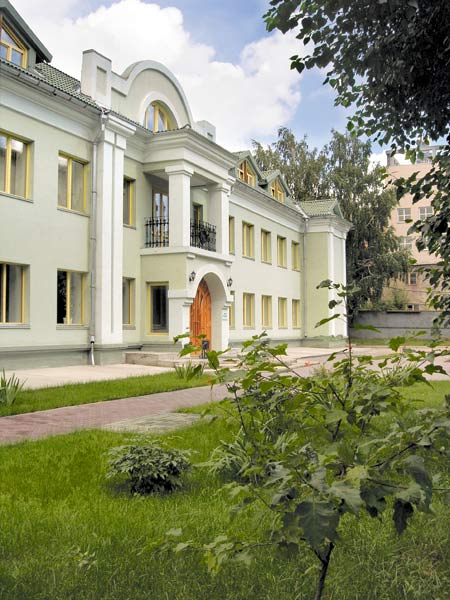
 |  October 7, 2007 - Nicholas Roerich Museum, Novosibirsk, Siberia (Russia). "Carries out extensive cultural and educational activities: exhibitions, literary and musical slaydprogrammy, social and scientific conferences , round tables, concerts. In the museum exhibition includes photographs from the archives of the Roerich family of Nicholas Roerich Museum in New York, reproductions of paintings of Nicholas and Svetoslav Roerich, as well as temporary exhibitions of other artists , various other exhibits. [Google translation]" October 7, 2007 - Nicholas Roerich Museum, Novosibirsk, Siberia (Russia). "Carries out extensive cultural and educational activities: exhibitions, literary and musical slaydprogrammy, social and scientific conferences , round tables, concerts. In the museum exhibition includes photographs from the archives of the Roerich family of Nicholas Roerich Museum in New York, reproductions of paintings of Nicholas and Svetoslav Roerich, as well as temporary exhibitions of other artists , various other exhibits. [Google translation]"
|
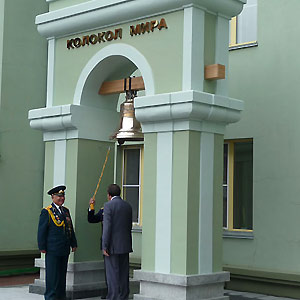
 |  June 25, 2009 - Peace Bell, Nicholas Roerich Museum, Novosibirsk, Siberia (Russia). "Reminds the humanity about their unity and inspires them to maintain peace on the Planet and protect the unique beauty of the Earth. Peace Bell symbolizes universality, solidarity, harmony and constructive endeavors of people of the whole world. Besides it fosters people to actively participate in preservation of nature, life, and culture heritage on our Planet... In Russia this tradition has been promoted and patronized since 1998 by Anatoly Nikolayevich Berezovoi, Soviet Cosmonaut, Hero of the Soviet Union [sic]." Information courtesy of Ekaterina Gracheva. June 25, 2009 - Peace Bell, Nicholas Roerich Museum, Novosibirsk, Siberia (Russia). "Reminds the humanity about their unity and inspires them to maintain peace on the Planet and protect the unique beauty of the Earth. Peace Bell symbolizes universality, solidarity, harmony and constructive endeavors of people of the whole world. Besides it fosters people to actively participate in preservation of nature, life, and culture heritage on our Planet... In Russia this tradition has been promoted and patronized since 1998 by Anatoly Nikolayevich Berezovoi, Soviet Cosmonaut, Hero of the Soviet Union [sic]." Information courtesy of Ekaterina Gracheva.
|

|  October 14, 2009 - Walt Whitman Monument, Moscow State University, Moscow (Russia). Dedicated by US Secretary of State Hilary Rodham Clinton (right image). "Reciprocal for the statue of Alexander Pushkin (left image) that was placed on the campus of The George Washington University in Washington, DC," in June 1999.
October 14, 2009 - Walt Whitman Monument, Moscow State University, Moscow (Russia). Dedicated by US Secretary of State Hilary Rodham Clinton (right image). "Reciprocal for the statue of Alexander Pushkin (left image) that was placed on the campus of The George Washington University in Washington, DC," in June 1999. 
|

|  Future - Russian-Jewish Museum of Tolerance, Moscow? (Russia). "Finalized the German-based Graft Architects‘ design for the new museum. Grafts’ renovation and expansion of the 1927 Konstantin Melnikov’s bus depot will transform the space into the world’s largest Jewish museum.
The existing Jewish community center in Moscow contains several Jewish institutions, such as a yeshiva & a university, yet the addition of Grafts’ museum will be the final piece in completing this cultural space. The museum, which will include a library, a center for Judaic studies & conference rooms, will commemorate Russian-Jewish history and include galleries of Jewish art.
Graft Architects will preserve the landmark garage building while making the interior compatible for contemporary museum expositions. The exterior of the structure will remain untouched, making it a visible monument of Russian heritage, yet the building will be enlarged with the addition of underground floors covering 15,000 square meters. The new interior will include undulating floors & surfaces that create an organic landscape. This dynamic interior offers a highly versatile setting for various events and enhances the original shell of the building. The renovation and expansion is a perfect blend of history mixing with the present." Future - Russian-Jewish Museum of Tolerance, Moscow? (Russia). "Finalized the German-based Graft Architects‘ design for the new museum. Grafts’ renovation and expansion of the 1927 Konstantin Melnikov’s bus depot will transform the space into the world’s largest Jewish museum.
The existing Jewish community center in Moscow contains several Jewish institutions, such as a yeshiva & a university, yet the addition of Grafts’ museum will be the final piece in completing this cultural space. The museum, which will include a library, a center for Judaic studies & conference rooms, will commemorate Russian-Jewish history and include galleries of Jewish art.
Graft Architects will preserve the landmark garage building while making the interior compatible for contemporary museum expositions. The exterior of the structure will remain untouched, making it a visible monument of Russian heritage, yet the building will be enlarged with the addition of underground floors covering 15,000 square meters. The new interior will include undulating floors & surfaces that create an organic landscape. This dynamic interior offers a highly versatile setting for various events and enhances the original shell of the building. The renovation and expansion is a perfect blend of history mixing with the present."
|
3 Peace Monuments in Serbia
Right click image to enlarge.


|  June 21, 1941 - Monument ŕ la Paix, Marseilles (France). Antoine Sartorio Louis Botinelly & Élie-Jean Vézien sculpteurs. "Aux victimes de l'attentat du 9 octobre 1934 ŕ Marseille qui coűte la vie au ministre des Affaires étrangčres Louis Barthou (1862-1934) et au roi Alexandre 1er de Yougoslavie (1888-1934)." June 21, 1941 - Monument ŕ la Paix, Marseilles (France). Antoine Sartorio Louis Botinelly & Élie-Jean Vézien sculpteurs. "Aux victimes de l'attentat du 9 octobre 1934 ŕ Marseille qui coűte la vie au ministre des Affaires étrangčres Louis Barthou (1862-1934) et au roi Alexandre 1er de Yougoslavie (1888-1934)." 
|



| M
U
S
E
U
M |  1953 - October 21 Memorial Park, Desankin venac, Kragujevac
(Serbia). At the site of the Kragujevac Massacre where 2,796 men, women and children were killed on October 21, 1941, by German occupation forces. Includes "Broken Wing" Monument (left image) & Genocide Museum (right image) which opened in 1976, Stanisa Brkic, curator. Click here for Wikipedia article. Info courtesy of Gerard Lössbroek.
1953 - October 21 Memorial Park, Desankin venac, Kragujevac
(Serbia). At the site of the Kragujevac Massacre where 2,796 men, women and children were killed on October 21, 1941, by German occupation forces. Includes "Broken Wing" Monument (left image) & Genocide Museum (right image) which opened in 1976, Stanisa Brkic, curator. Click here for Wikipedia article. Info courtesy of Gerard Lössbroek.
|

|  1995 - Peace Monument, Belgrade (Serbia). "At the site of the World War II Nazi concentration camp of Sajmiste, where some 48,000 Jews, Serbs & Roma perished..." /// "A 10 m (33 ft) high monument created by artist Miodrag Popovic was erected on the banks of the Sava in 1995." 1995 - Peace Monument, Belgrade (Serbia). "At the site of the World War II Nazi concentration camp of Sajmiste, where some 48,000 Jews, Serbs & Roma perished..." /// "A 10 m (33 ft) high monument created by artist Miodrag Popovic was erected on the banks of the Sava in 1995."
|
2 Peace Monuments in Slovakia
Right click image to enlarge.
 |  Date? - Peace Fountain, Grassalkovich Palace, Hodzovo Square, Bratislava (Slovakia). The square is locally called Mierove Namestie / Peace Square. Date? - Peace Fountain, Grassalkovich Palace, Hodzovo Square, Bratislava (Slovakia). The square is locally called Mierove Namestie / Peace Square.
|
 |  Date? - Maratonec Mieru / Marathon of Peace monument, Kosice (Slovakia). In front of Vychodoslovenske muzeum / Eastslovakian museum. Date? - Maratonec Mieru / Marathon of Peace monument, Kosice (Slovakia). In front of Vychodoslovenske muzeum / Eastslovakian museum.
|
1 Peace Monument in Slovenia
Right click image to enlarge.
Turkmenistan
Not in this file. Click here for monuments in Turkmenistan.
10 Peace Monuments in Ukraine
Right click image to enlarge.

|  July 1976 - Babi Yar Monument, Kiev (Ukraine). "At the ravine then on the city limits of Kiev where the German army (with the assistance of the Ukrainian police) massacred the town's Jewish population in 1941. German army records note 33,771 Jews shot here in two days. Yevgeny Yevtushenko's famous poem (1961) which first brought attention to the massacre in the Soviet Union began 'At Babi Yar there is no monument'. Now there is this one, with tablets in Russian, Ukrainian & Yiddish which state that over 100,000 'citizens of Kiev and prisoners of war' were executed there." /// "The killings took place in a huge ravine in central Kiev that stretched for several kilometers (miles); the area as of now is neither fenced nor properly marked. Seven different monuments are there, but experts say they are not linked into a coherent memorial of remembrance. Children play in a park where one monument stands. Across the street, commuters rush past a busy metro station." July 1976 - Babi Yar Monument, Kiev (Ukraine). "At the ravine then on the city limits of Kiev where the German army (with the assistance of the Ukrainian police) massacred the town's Jewish population in 1941. German army records note 33,771 Jews shot here in two days. Yevgeny Yevtushenko's famous poem (1961) which first brought attention to the massacre in the Soviet Union began 'At Babi Yar there is no monument'. Now there is this one, with tablets in Russian, Ukrainian & Yiddish which state that over 100,000 'citizens of Kiev and prisoners of war' were executed there." /// "The killings took place in a huge ravine in central Kiev that stretched for several kilometers (miles); the area as of now is neither fenced nor properly marked. Seven different monuments are there, but experts say they are not linked into a coherent memorial of remembrance. Children play in a park where one monument stands. Across the street, commuters rush past a busy metro station."
|

|  1984 - Friendship Arch, Kiev (Ukraine). Locally called "The Yoke," the arch is 50 meters across and leads to a view of the Dnieper River. Bronz and granite statues under the arch. Erected on the 325th anniversary of the Treaty of Pereiaslav, which tied the Ukraine to Russia. 1984 - Friendship Arch, Kiev (Ukraine). Locally called "The Yoke," the arch is 50 meters across and leads to a view of the Dnieper River. Bronz and granite statues under the arch. Erected on the 325th anniversary of the Treaty of Pereiaslav, which tied the Ukraine to Russia. 
| 
|  Date? - Peace Monument?, Kiev (Ukraine). "Looks like a peace monument and probably is." Date? - Peace Monument?, Kiev (Ukraine). "Looks like a peace monument and probably is."
|
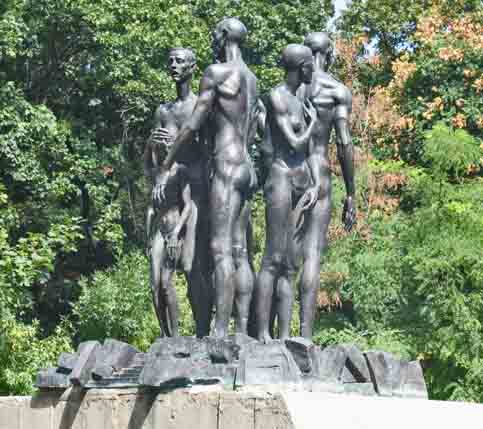

|  Date? - Holocaust Memorial, Odessa (Ukraine). "In the square where tens of thousands of Jews from Odessa were killed." // "I wanted to see the Holocaust Memorial – wow, it is powerful. It is in a
park in the city & shows emaciated men along with a barbed wire fence. It says (in English), Holocaust." In Ukrainian, Russian & Hebrew it says Never Forget, Never Forgive." In the same park are trees planted to recognize people from Odessa who hid or helped Jews during this time.
The sad thing is, there are only 90 trees. Prior to World War II, there were about 17,000 Jews in Odessa – a quarter of the population at the time. Today about 30,000 Jews live in Odessa – an increase, yes, since 60 years ago but not one that is proportionate to the population as a whole." Click here for Wikipedia article. Date? - Holocaust Memorial, Odessa (Ukraine). "In the square where tens of thousands of Jews from Odessa were killed." // "I wanted to see the Holocaust Memorial – wow, it is powerful. It is in a
park in the city & shows emaciated men along with a barbed wire fence. It says (in English), Holocaust." In Ukrainian, Russian & Hebrew it says Never Forget, Never Forgive." In the same park are trees planted to recognize people from Odessa who hid or helped Jews during this time.
The sad thing is, there are only 90 trees. Prior to World War II, there were about 17,000 Jews in Odessa – a quarter of the population at the time. Today about 30,000 Jews live in Odessa – an increase, yes, since 60 years ago but not one that is proportionate to the population as a whole." Click here for Wikipedia article.
|


|  December 1996 - Kharkov Museum of the Holocaust, 28 Petrovskogo str., Kharkov (Ukraine). "The first & so far the only museum of the Holocaust in Ukraine. The museum is based on the materials & documents from the personal archive of the director & founder Larisa Volovik. It’s constantly added by documents, gathered by the Drobizky Yar regional committee & Holocaust educational center of Kharkiv/Kharkov." December 1996 - Kharkov Museum of the Holocaust, 28 Petrovskogo str., Kharkov (Ukraine). "The first & so far the only museum of the Holocaust in Ukraine. The museum is based on the materials & documents from the personal archive of the director & founder Larisa Volovik. It’s constantly added by documents, gathered by the Drobizky Yar regional committee & Holocaust educational center of Kharkiv/Kharkov."
|

|  Date? - Weeping Wall, Artyomovsk Winery, Artyomovsk (Ukraine). "The Artyomovsk underground quarry was the scene of a particularly-horrible mass murder during Word War II: The Germans arrived in the town in october 1941 and drove more than 3000 people believed to be jews to the underground, bricking them alive in one of the galleries after taking all their belongings. The Soviet army liberated the area in september 1943, & a memorial was later built at the entry of the gallery where the crime took place. The weeping wall is the name of the memorial and it happens to be the only place in the underground mine where some water comes out in tiny drops from the wall. It is said that this water drops are the tears of the victims." Date? - Weeping Wall, Artyomovsk Winery, Artyomovsk (Ukraine). "The Artyomovsk underground quarry was the scene of a particularly-horrible mass murder during Word War II: The Germans arrived in the town in october 1941 and drove more than 3000 people believed to be jews to the underground, bricking them alive in one of the galleries after taking all their belongings. The Soviet army liberated the area in september 1943, & a memorial was later built at the entry of the gallery where the crime took place. The weeping wall is the name of the memorial and it happens to be the only place in the underground mine where some water comes out in tiny drops from the wall. It is said that this water drops are the tears of the victims."
|
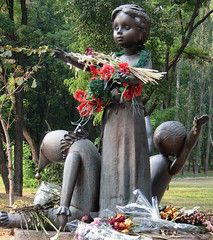
 |  2001 - Monument to children killed at Babi Yar, near the Dorohozhychi subway station, Kiev (Ukraine). Inscribed (only in Ukranian): "To the children shot in Babi Yar 1941." 2001 - Monument to children killed at Babi Yar, near the Dorohozhychi subway station, Kiev (Ukraine). Inscribed (only in Ukranian): "To the children shot in Babi Yar 1941."
|

|  Date? - Monument to Murdered Children, near Kharkov (Ukraine). "In some distance [from Drobinsky Yar], closer to the nearest metro station, a monument to the murdered children has been erected. Composed of somewhat frightening life-sized dolls, it completes the limited physical memorial reference to the horrors committed here." Date? - Monument to Murdered Children, near Kharkov (Ukraine). "In some distance [from Drobinsky Yar], closer to the nearest metro station, a monument to the murdered children has been erected. Composed of somewhat frightening life-sized dolls, it completes the limited physical memorial reference to the horrors committed here."
|
 


|  December 13, 2002 - Drobitsky Yar Memorial, Kharkov (Ukraine). Inscription in 3 languages on black slab in front of the menorah: "In December 1941 - January 1942 Nazis annihilated the prisoners of the Kahrkov Jewish Ghetto in Drobitsky Yar - more than 16 thousands people - the aged, women, children - only because they were Jews." Inscription in 5 languages under the white arch: "Thou Shalt Not Kill." // Right image shows US author Greg Dawson pointing at name of his mother erroroneously entered on list of Jews killed at Drobitsky Yar. Dawson's mother & aunt are the only known survivors. He wrote "Hiding in the Spotlight" (2009) & "Judgment Before Nuremberg" (2012). December 13, 2002 - Drobitsky Yar Memorial, Kharkov (Ukraine). Inscription in 3 languages on black slab in front of the menorah: "In December 1941 - January 1942 Nazis annihilated the prisoners of the Kahrkov Jewish Ghetto in Drobitsky Yar - more than 16 thousands people - the aged, women, children - only because they were Jews." Inscription in 5 languages under the white arch: "Thou Shalt Not Kill." // Right image shows US author Greg Dawson pointing at name of his mother erroroneously entered on list of Jews killed at Drobitsky Yar. Dawson's mother & aunt are the only known survivors. He wrote "Hiding in the Spotlight" (2009) & "Judgment Before Nuremberg" (2012).
|
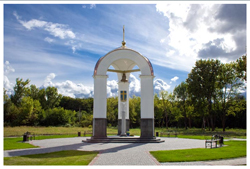
|  June 27, 2009 - Monument of Reconciliation, Poltava (Ukraine). "Marks the 300th anniversary of the Battle of Poltava [June 27, 1709]... Symbolizes the reconciliation of the peoples of Russia, Sweden & Ukraine who fought in the Great Northern War [1700-1721] – the largest military conflict of the 18th century...Designed by architect Valery Tregubov. Consists of three joined arches under a common cupola or dome with a bell of unity. Three pillars of the monument are decorated with mosaic flags of the Russian Federation, Sweden & Ukraine created by artist Leonid Totskiy. Each pillar bears the inscription 'Time heals all wounds' in the appropriate language. At the center of the monument is a short column crowned with the dove of peace created by sculptor Seiran Margaryan." June 27, 2009 - Monument of Reconciliation, Poltava (Ukraine). "Marks the 300th anniversary of the Battle of Poltava [June 27, 1709]... Symbolizes the reconciliation of the peoples of Russia, Sweden & Ukraine who fought in the Great Northern War [1700-1721] – the largest military conflict of the 18th century...Designed by architect Valery Tregubov. Consists of three joined arches under a common cupola or dome with a bell of unity. Three pillars of the monument are decorated with mosaic flags of the Russian Federation, Sweden & Ukraine created by artist Leonid Totskiy. Each pillar bears the inscription 'Time heals all wounds' in the appropriate language. At the center of the monument is a short column crowned with the dove of peace created by sculptor Seiran Margaryan."  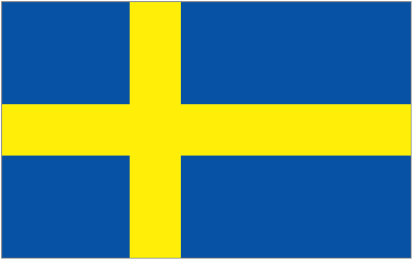
|
3 Peace Monuments in Uzbekistan
Right click image to enlarge.

| P
A
R
K |  September 12, 1988 - Seattle Peace Park, Tashkent (Uzbekistan). "Covers a territory of 1.5 acres. The Seattle-Tashkent Sister City Association along with Peace Corps Volunteers created the park, decorating it with a fountain, a mosaic map of the world [in image], a striking sculpture by a Seattle-based artist, many decorative and unique tiles designed by Seattle citizens, and planting the trees that have grown over the years and now shade half of the park." Photo courtesy of Anatoly Ionesov 11/08. September 12, 1988 - Seattle Peace Park, Tashkent (Uzbekistan). "Covers a territory of 1.5 acres. The Seattle-Tashkent Sister City Association along with Peace Corps Volunteers created the park, decorating it with a fountain, a mosaic map of the world [in image], a striking sculpture by a Seattle-based artist, many decorative and unique tiles designed by Seattle citizens, and planting the trees that have grown over the years and now shade half of the park." Photo courtesy of Anatoly Ionesov 11/08. 
|



|  April 21, 2003 - World Peace Bell, Babur Culture and Recreation Park, Tashkent (Uzbekistan). Photo courtesy of Anatoly Ionesov 11/08. One of 20 WPB's placed in 16 different countries by the World Peace Bell Association of Tokyo, Japan. April 21, 2003 - World Peace Bell, Babur Culture and Recreation Park, Tashkent (Uzbekistan). Photo courtesy of Anatoly Ionesov 11/08. One of 20 WPB's placed in 16 different countries by the World Peace Bell Association of Tokyo, Japan. 
|
Please email your comments & questions to geovisual at comcast.net. Thank you.
Return to Peace Monuments main page.






























